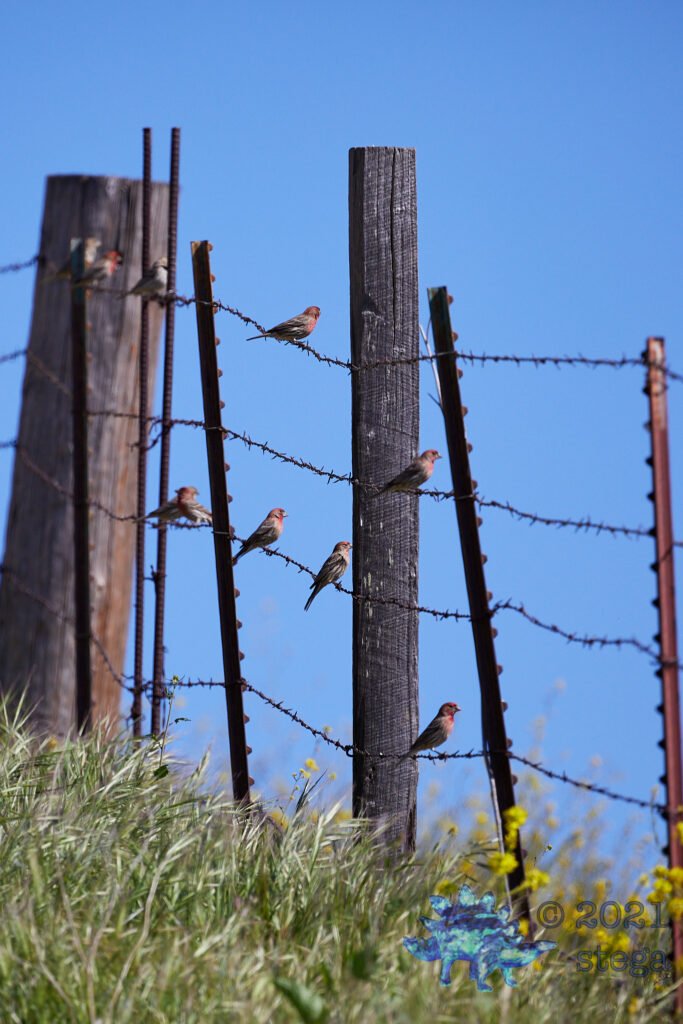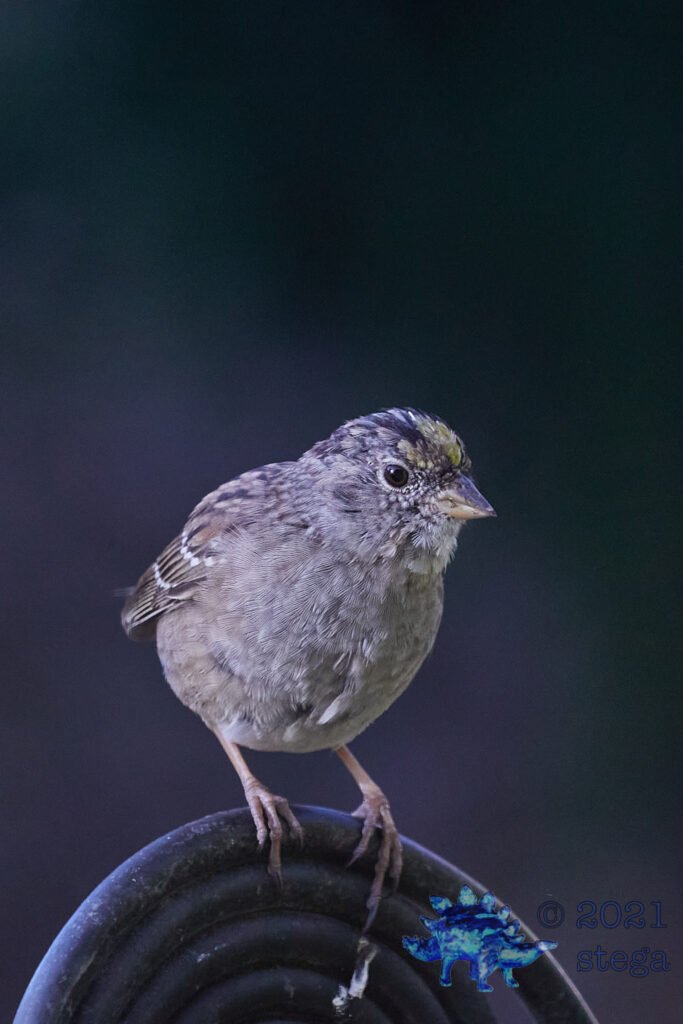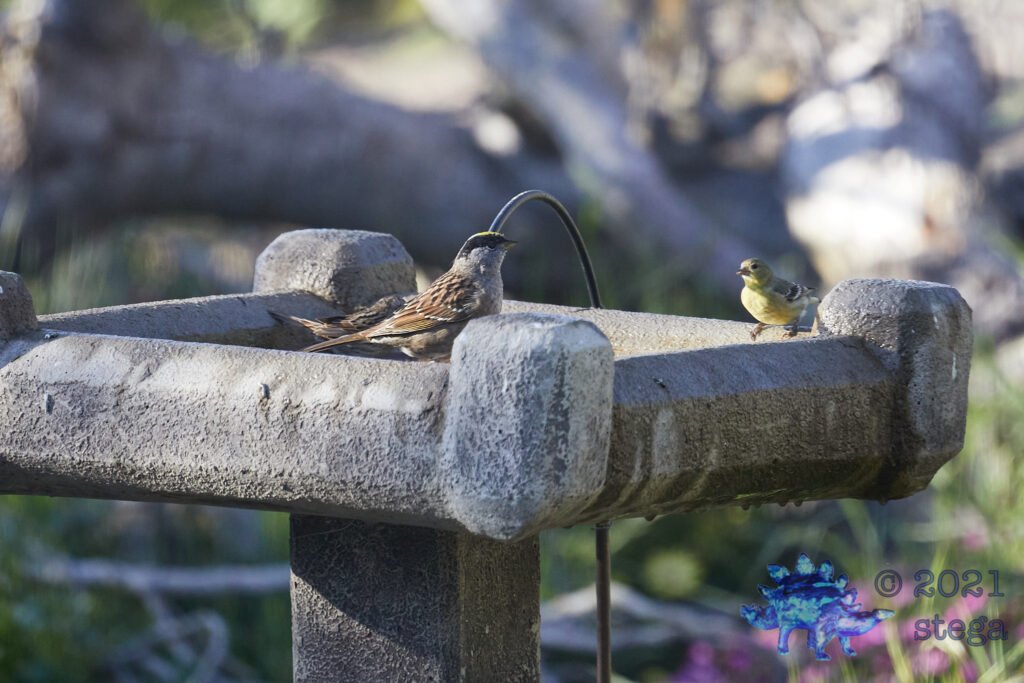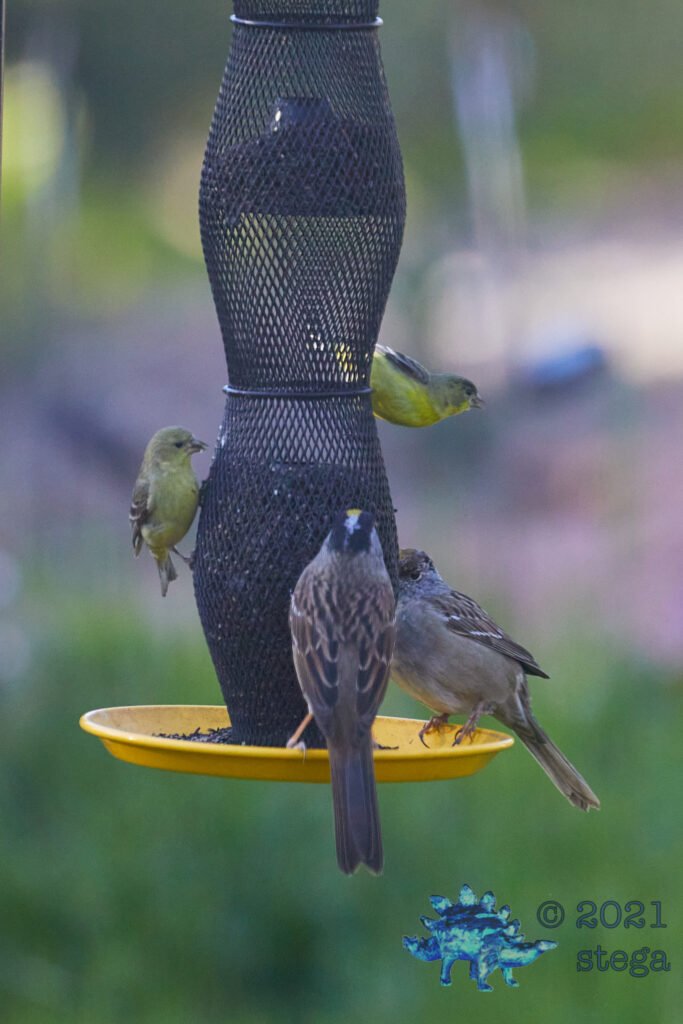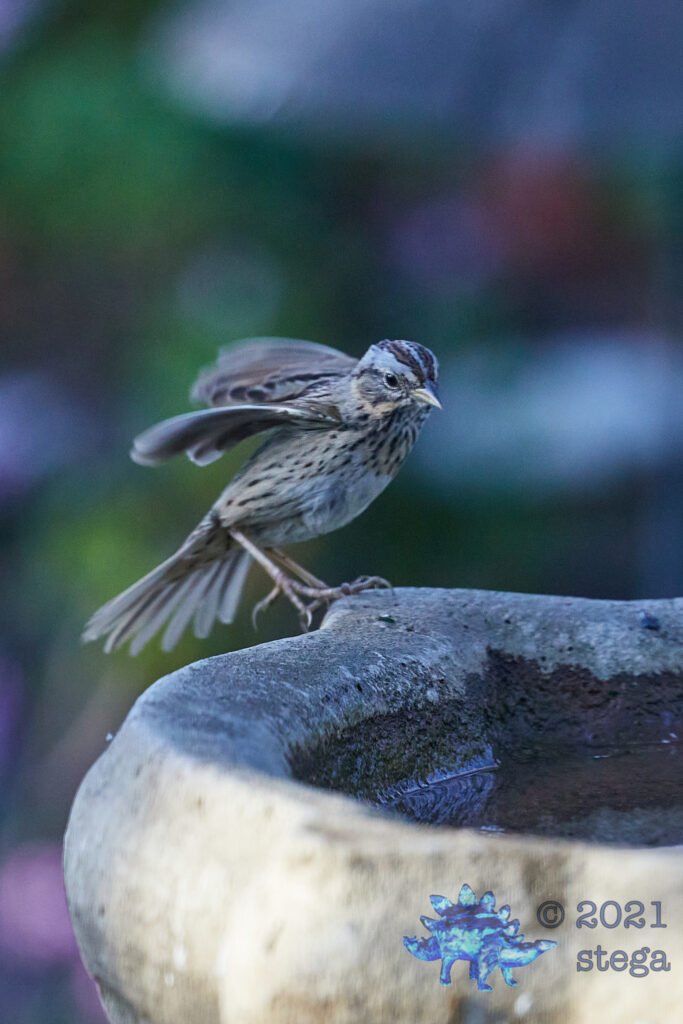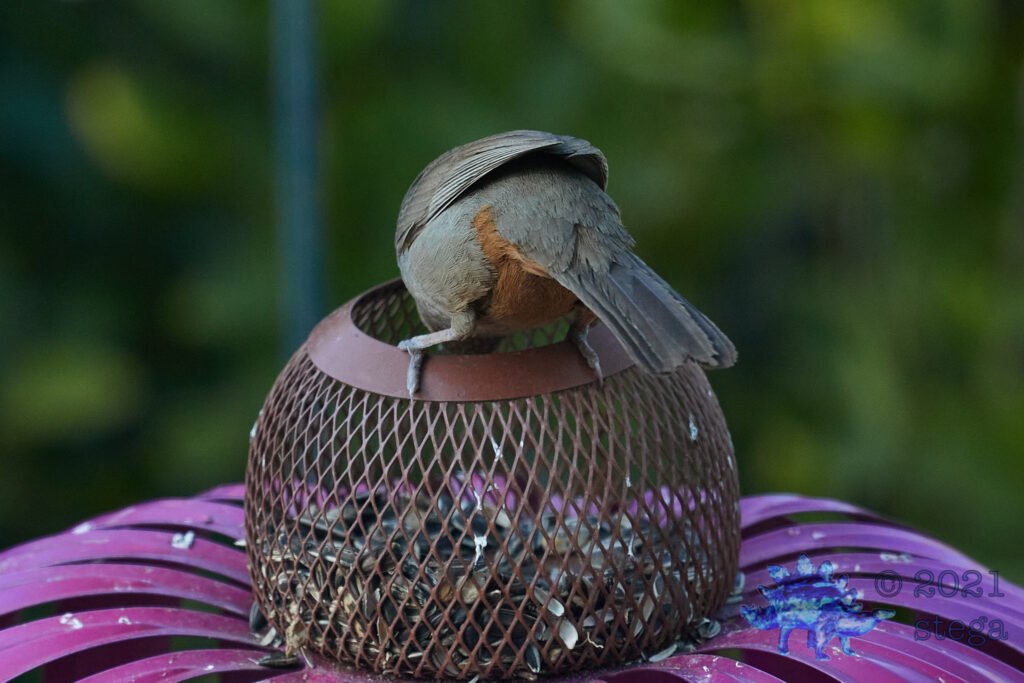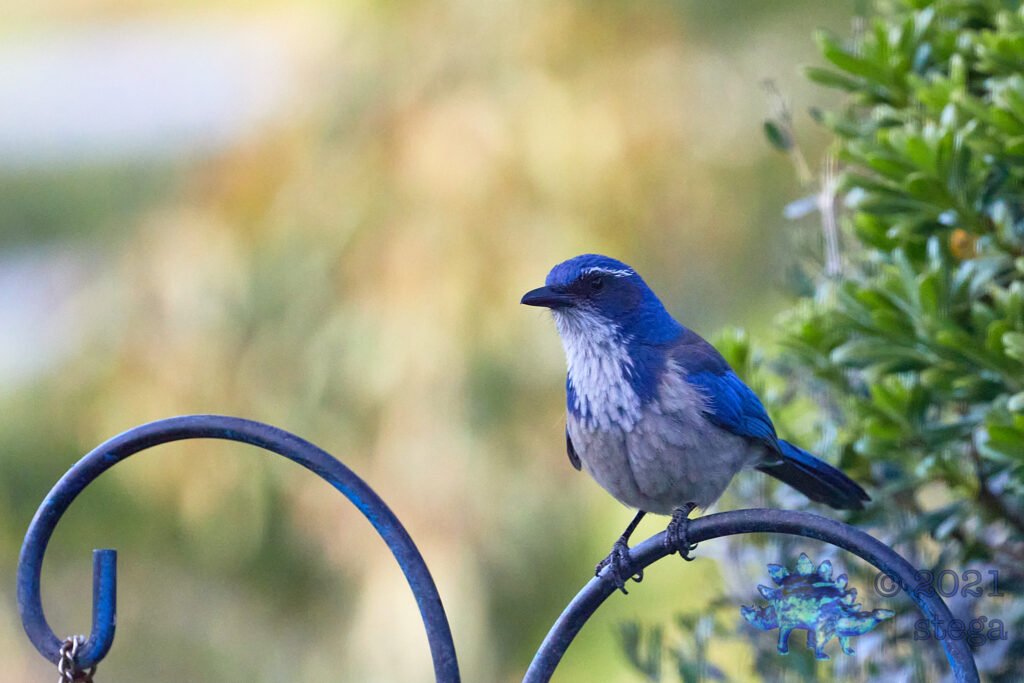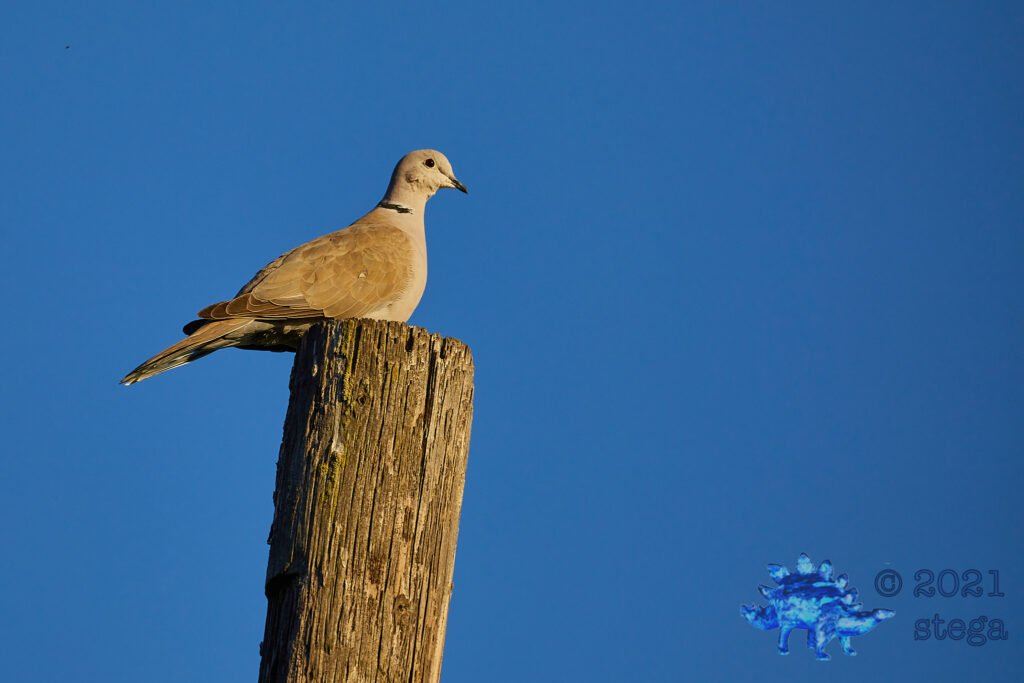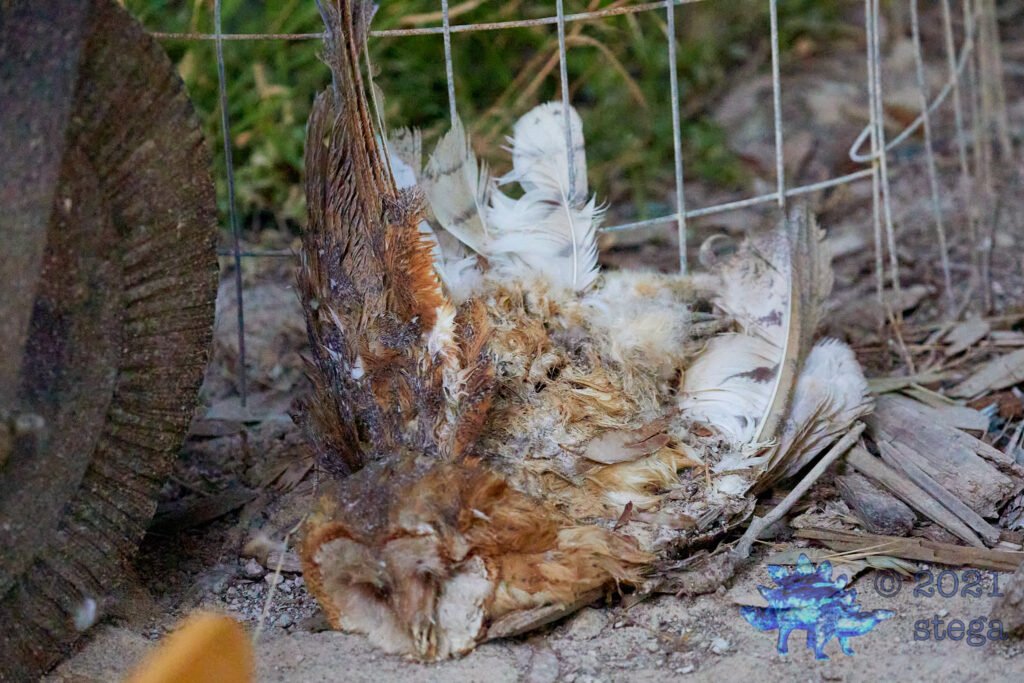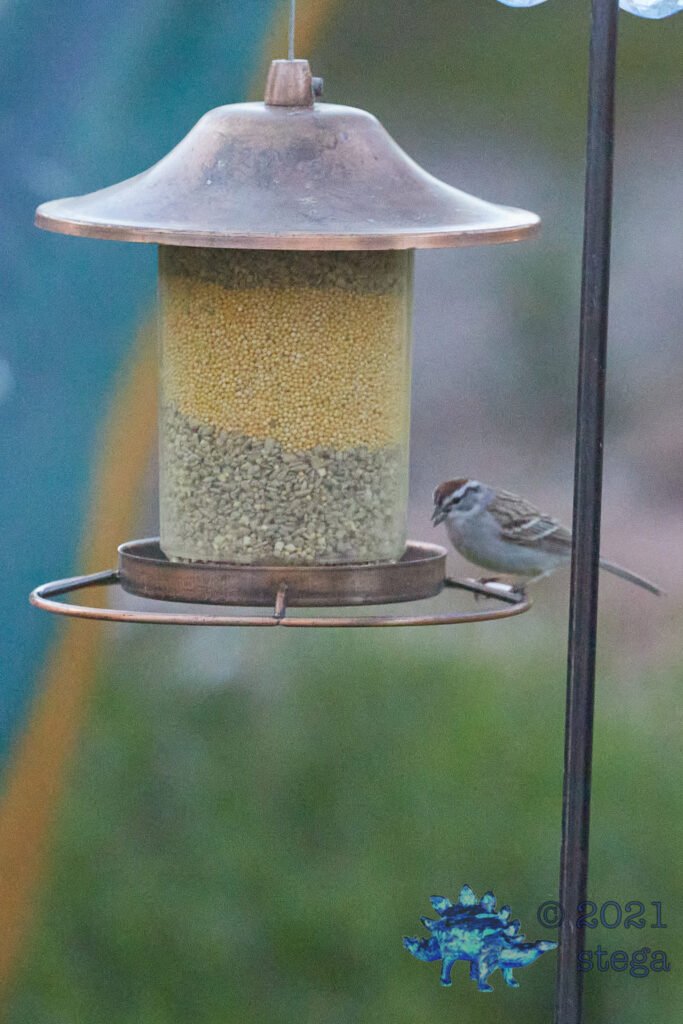
Diving Videos: Solo Fish
Perhaps less educated than those in the last post

Perhaps less educated than those in the last post

What are they learning?
All sorts of things at the bottom of the sea, plus at the last half of this vid is just Yellow-Headed Jawfish — my favorite.
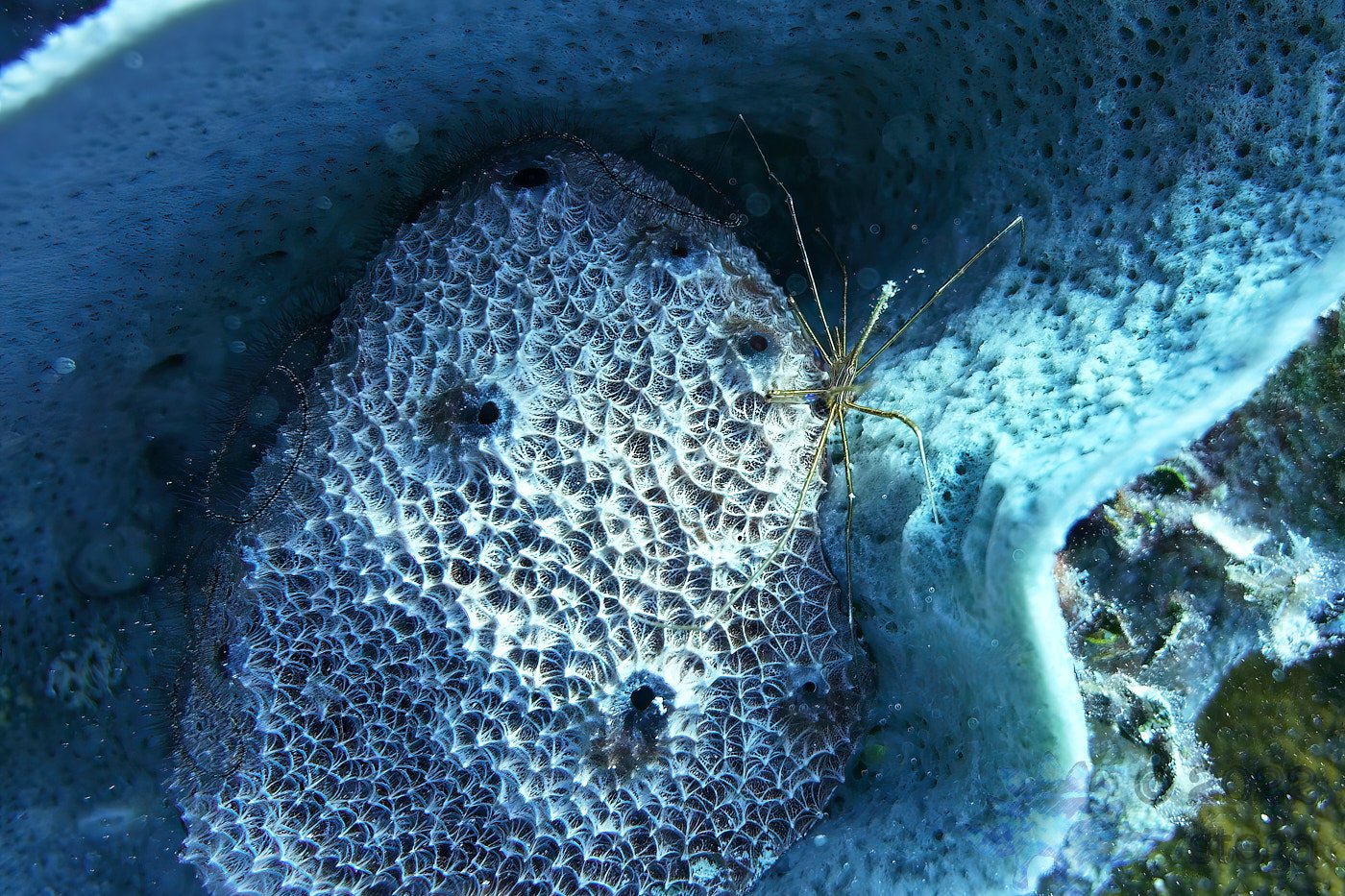
Big and small!
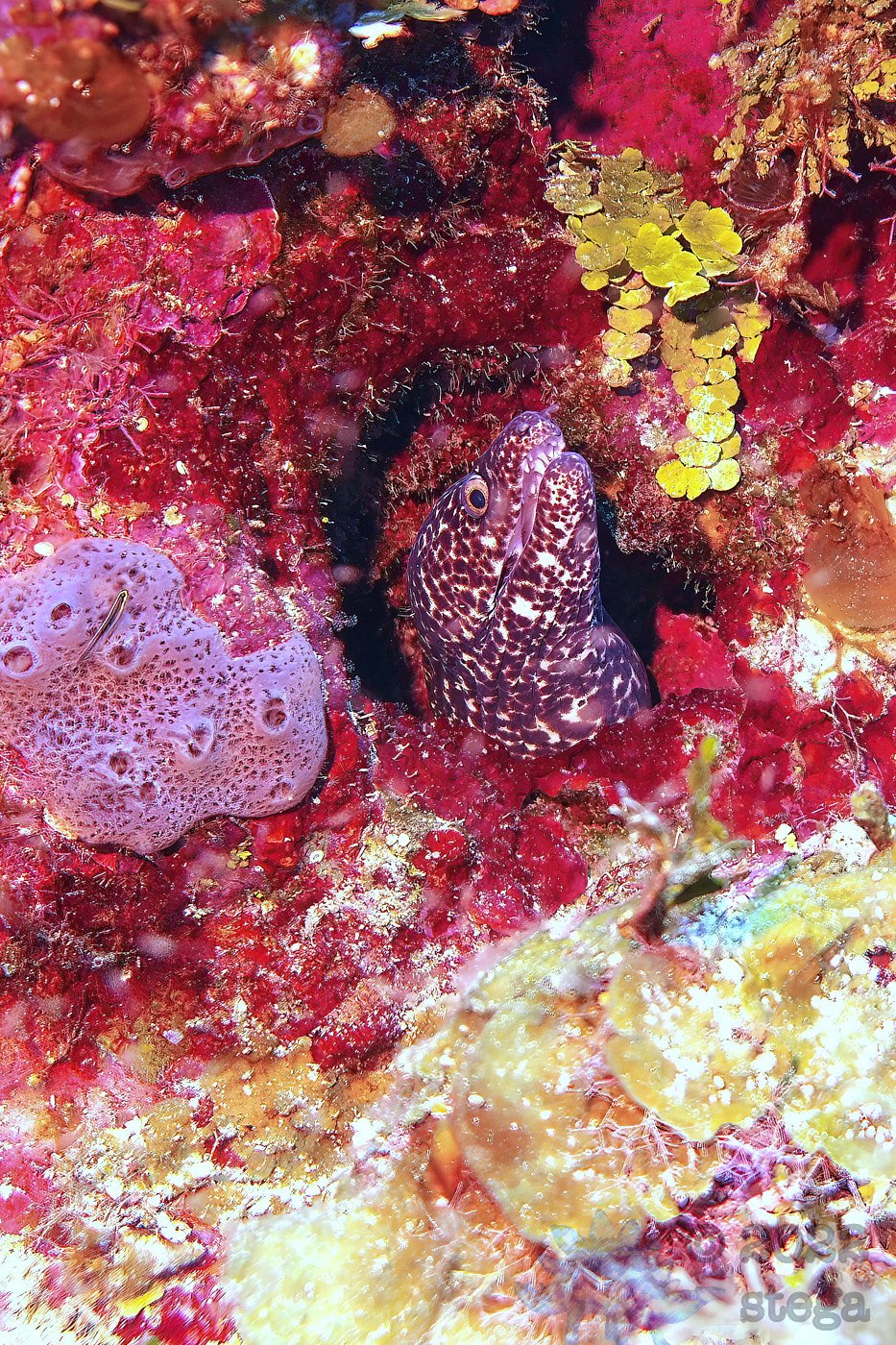
I finally had time to sit down and go through the media generated from the vacation I took at the end of January. Unlike past trips, I managed to sort through the media rather promptly and quickly. (I have been known to take over a year to do such a chore in the past.)
I uploaded some of video clips of various things to my Youtube channel and over the next few weeks they will be published/go live.
Here’s the first one of a couple of rather cute eels.
A compilation video from this winter’s trip.
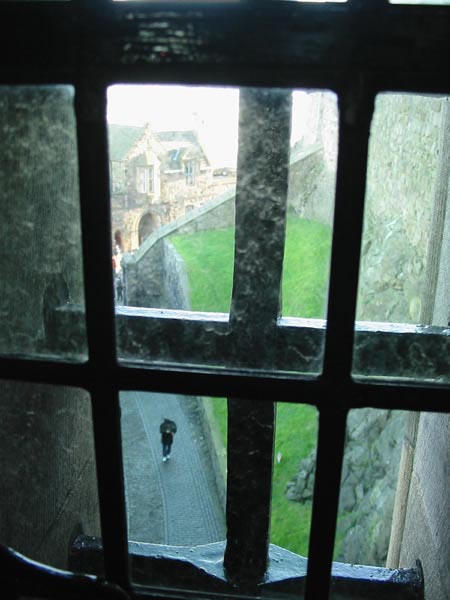
On my last day on the island I proctored trivia night one last time. Took a while to get the questions posted here as I didn’t fly straight home, but met up with Agent Smith in Denver and we flew on to Montrose to pick up a replacement RV for the one stolen at the start of January from the mechanic’s service yard. After that trip I ended up flying out to Ohio to assist family and thus am only just now catching up on things.
So test out your knowledge on this round of questions and see how you go.
History
Islands
Fictional Islands
Old Things
Bonus Birds!
Scroll
Down
To
See
The
Answers
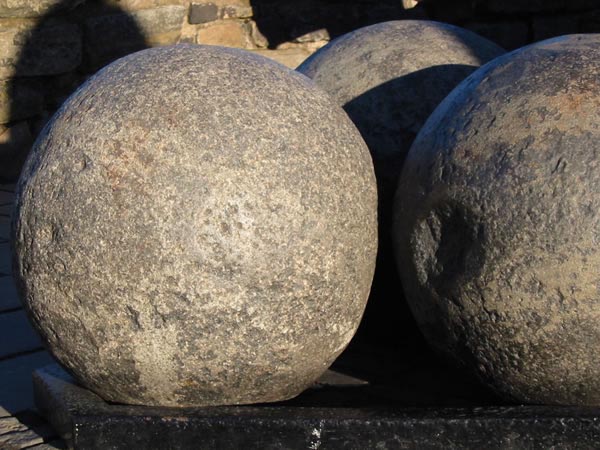
Keep
Scrolling
Scroll
A
Bit
More

Answers
Trivia
History
Islands
Fictional Islands
Old Things
Bonus Birds!

Apparently I was good enough to be allowed to run trivia here at the resort a second time (and then once more next week!)
Here are the questions I drafted….see how you do.
New History
Pretty Old History
Old or Ancient History
Cartoons
Dinosaurs
Bonus
Scroll
Down
To
See
The
Answers

Keep
Scrolling

Scroll
A
Bit
More
New History
Pretty Old History
Old or Ancient History
Cartoons
Dinosaurs
Bonus

Stega is currently on vacation on a foreign island far far away from Purgatory. For part of the past week she was actually the only guest — technically there were two others staying here but only because one got a positive test result and had to wait two days for a more accurate test which was of course negative before they could depart. Partly because I was the only guest and partly because I’ve stayed here in past years, I got to run the weekly trivia quiz at the bar on Thursday night.
Below are the questions with the answers beneath them and you’re welcome to test your knowledge. Let me know if you answer more than 16 correctly, but be honest….
1984 Summer Olympics
Movies
Music
Birds
Women
Scroll
Down
For
The
Answers

Keep
Scrolling

Keep
Scrolling

The random images were taken long ago at the Camera Obscura in Edinburgh.
1984 Summer Olympics
Movies
Music
Birds
Women
Bonus
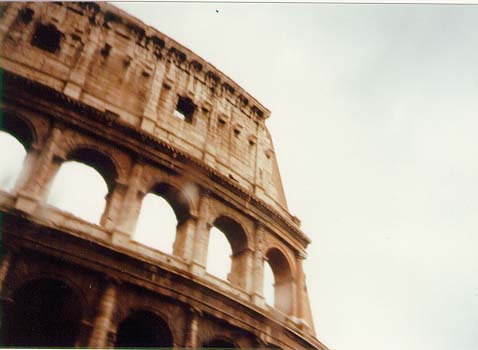
“Consider this
The hint of the century
Consider this
The slip that brought me
To my knees failed
What if all these fantasies
Come flailing around
Now I’ve said too much”
REM–“Losing My Religion”
It was a picture of Bert and Ernie. I learned to use scissors by cutting out a picture of Bert and Ernie. My sister criticized my dexterity, but my mother silenced her and encouraged me to continue.
That afternoon I took a nap in my crib. I was three years old, and the bars of the crib were lowered, so I knew how to get in and out whenever I wished. Somehow I ended up with the scissors in there with me. My mother was not happy with the effect they had on my hair.
First, imagine that you are an undergraduate studying literature. Next, imagine that you’re sitting before a computer trying to write a critical essay. The glow of the screen is reflected in your eyes as you stare blankly at your notes and then blankly at the Samuel Johnson Reader before you and then at the tree outside and the clothes that need washing and the TV that needs dusting. You get up and make some coffee hoping that that will settle your mind and you will be able to write more effectively. You’ve done this how many times–it should be easy. You tell yourself this as you go into the kitchen and make yourself a cup of coffee. If you could just find or formulate a thesis you’d be on your way. It would be finished in under two hours. But, and you catch yourself here, this isn’t any paper–this is the last paper you will ever write as an undergraduate. You sink into one of the chairs at the kitchen table as this realization spreads through your mind–your last paper. Its hard to believe. You’ve been at this so long…. You chide yourself that none of this self-realization is going o help you write a critical essay, so coffee in hand, you sit back down before your computer and begin to type. Samuel Johnson was a man of words and letters which the literary world has not seen the likes of since. A man of ponderance and often satire, he has become one of the standard bearers of the Cannon and her army of works. Yet Johnson was not always thought of in such an ideal light, proof of this–you stop. You look up and realize you forgot to put sugar in your coffee and you like sugar in your coffee. But instead of getting up and going back into the kitchen you first read over what you have just written, and you realize how awful it is. It isn’t you or your voice or what you really think. Its what and how you have been told to write. That doesn’t matter, you were almost to a thesis and you’re going to be critical. You take a sip of coffee and continue writing.
“Pooh had wandered into the Hundred Acre Wood, and was standing in front of what had once been Owl’s House. It didn’t look at all like a house now; it looked like a tree which had been blown down; and as soon as a house looks like that, it is time you tried to find another one.” A.A. Milne–The House at Pooh Corner
"A B C D E G I J..." "No, that's not right. Start over." "A B D E F G I J K..." "Again." I sat with the little writing pad in front of me. It's block letters of "Aa Bb Cc..." marching across its cover. I was sitting on the couch in the living room of our new house. My older sister and mother were hanging over my head pointing to the letters in front of me. If I stumbled my sister would catch me like a cement floor. She soon tired of the game and my mother was left to monitor my progress alone. I grew tired of the endless repetition. I grew lazy. I couldn't understand why I had to sit and learn this. Sesame Street used these same letters, but they were never in any particular order. I knew what the individual letters were--why must I memorize them in this order? What did it matter? Eventually I said the whole thing correctly and my mother let me go play.
In Idler No. 103 Samuel Johnson is writing a sort of epilogue as his publications is ending. He writes, “the Idler and his reader have contracted no close friendship.” After over one-hundred issues, “those who never could agree together shed tears when mutual discontent has determined them to final separation.” Johnson clearly–you pause.
Johnson was very pompous. Oh, he had just cause to be. He was after all basically the head neutron in the literary nucleus of his time. He wrote so much. In the four or so years you’ve been here you’ve writen so comparatively little. But you shouldn’t think to compare yourself to Johnson. He helped found this academia.
Unlike his other writings though this essay is not an argument or a criticism or a satire, but a farewell. As, “it s very happily and kindly provided that in every life there are certain pauses and interruptions, which force consideration upon the careless, and seriousness upon the light; points of time where one course of action ends and another begins; and by vicissitude of fortune, or alteration of employment, by change of place, or loss of friend-ship we are forced to say something, ‘this is the last.'”
“‘Well,’ said Pooh, ‘what I like best–‘and then he had to stop and think. Because although Eating Honey was a very good thing to do,, there was a moment just before you began to eat it which was better than when you were, but he didn’t know what it was called.” A.A. Milne–The House at Pooh Corner
I was sitting on the letter C. It is the third letter from the beginning of the alphabet. I was the third child in alphabetical order in my kindergarten class. C is also the first letter of my middle name. I wanted to sit on L, for L is the first letter of my first name, but some boy got that letter instead. The teacher explained that eventually we would all get to sit on the other letters, but for now, or at least until she learned our names, we would have to sit where she put us.
Do you want this, your last effort of criticism as an undergraduate to be a careless ending? Just another two hours spent in front of a computer spell-checking words, making sure all your sentences are punctuated and your paragraphs have good transitions. Do you look back over these four years with a sense of accomplishment or with a sense of loss?
You came to college to slay dragons or meet your prince, to better yourself, to learn and begin your life, to become a product of yourself and a consumer of others. You’ve consumed Johnson just like Shakespeare, Dickens, Pound, Hemingway and Byron. During these four years you’ve learned how to digest literature by learning the mechanics and language of critical essays. You have been good and you have been diligent. You have been brilliant and you have been an idiot, yet did you ever know not just What you were saying but Why you were saying it?
“I was having this discussion
In a taxi heading downtown
Rearranging my position
On this friend of mine who had
A little bit of a breakdown
I said breakdowns come
And breakdowns go
So what are you going to do about it
That’s what I’d like know.”
Paul Simon–“Gumboots”
I was standing on the letter M. Yesterday I had sat on the letter L. I was standing because we were saying the pledge of allegiance. I remember because during the line that goes "And to the Republic for which it stands," I threw up all over the letter L.
I remember that I was sitting on the letter W. The room looked different from there. The light coming in from the window made everything seem fuzzy for a morning in May. We were all sitting around the circle and each of us was given an old nature magazine to cut pictures from. The pictures could be anything we liked. I found one picture of a deer and one of a little cat. I cut the out with my scissors.
When we were all done cutting out pictures the teacher went around the room and from each of our piles she chose one picture and told the student what it was. To my neighbors she said, "This is a dog," and "This is a bird." To me she said, "This is a cat."
Then she asked us to sit down in our seats at the tables. On the tables there were blocks. The kind that have letters on two or three sides and numbers or pictures on the rest. She asked us what sound our pictures started with. A chorus of B's C's and D's issued forth. We were then asked what letter made that sound, and very slowly I learned how to spell the word cat.
All of this lovely introspection isn’t helping with your essay on Johnson. It doesn’t help you really either–something is missing.
What is it? What is missing? You have a thesis. Samuel Johnson is venerated today, yet his reception by his contemporaries was not always as favorable. Thus we should re-evaluate the importance of–you stop again.
You re-read the paragraphs before you. You have arguments, annotations, appositives and apathy. You have four going on the five supporting arguments with at least one quote in each, several secondary sources, but what does it say? Its getting late and you need to finish this.
While readers of Johnson’s time may have outlived the Idler. He comments that “the day in which every work of the hand and imagination of the heart shall be brought to judgment, and an everlasting futurity shall be determined.” Johnson’s ideas have fallen to us. They are our inheritance. They like Eliot said, are our past. Of course we now know so much more then he did as Johnson is a part of what we know. Johnson ideas are still important for–
You stop for a moment and wonder about these ideas belonging to Johnson. What makes them so special, so useful for critiquing or discussing? They are well, and usually, clearly written. Yet are these ideas really Johnson’s and his alone? Is it possible to copyright your idea, argument or theory? Perhaps too many people strive too hard to put their names upon ideas. They seek to create ideas as lasting products of themselves. They live and promote their ideas. They die and their ideas will, if supported live on–a very Western idea, this market economy of ideas. Really though you can only register a patent on an idea. The system of academia is concerned with these ideas. That is not a bad thing. We need ideas. We need comunication. But is the system faltering or is it something inside of you–or is it both?
“Here the silent images
Are raised, here they receive
The supplication of a dead man’s hand
Under the twinkle of a fading star.” T.S. Eliot–“The Hollow Men”
My family moved to a new town the summer after my year of kindergarten and its scissors and circles, so the first day of first-grade I sat at a table and read from one of the new yellow books the teacher had given my group. Other children read from blue books. Later we learned that they were only Level One readers while we were Level Two.
It was a typical first year reader. The opening sentence was "See Bill run." There was a picture of a blond-haired boy running across the grassy lawn of a house in a middle class housing development. That was as far as we read that day.
There was a hornet's nest in the tree above the big slide, but I didn't break out in hives because I was allergic to bugs. It was just nerves. Everything was too new to me, so I missed the next day's pictures of Spot running with Bill.
You realize you are a part of this system, but you have the ecological value of a blade of grass. Like all the other blades of grass you stay firmly grounded in the soil. Harming nothing, food for others–being grass isn’t much work. You’d much rather be a rabbit or eagle or even a dandelion. If you were a dandelion you would feed from the same soil as the grass yet the ideas you brought to seed might fly to the winds. Johnson wasn’t a blade of grass, although he probably started out that way. He was a dandelion and a rabbit. Right now though you remember that you are just grass and subject to the rabbit’s teeth and the lawnmower’s blade.
“Sometimes all the shouting stops
and the restlessness loses hold
and I cry out to everything
that nothing is alone”
Toad the Wet Sprocket–“Nothing is alone”
There was a difficulty in living in that town that I have never been able to explain. It was unnamable and inescapable, yet there was a joy. I know that running came easily to me. Only two boys could out-run me. I remember the math flash cards. They were simple memorization. Reading was the simple recognition of words. These words described pictures, yet it was a simple mechanical process of memorization. They could have no true meaning other than in connection with their pictures.
Your quibbling isn’t helping you finish your paper. You need a conclusion. Johnson’s ideas should not lay forgotten on the side, for they are as important now as every. We need them and those of others to understand not just the works of later writers such as Brönte or Woolf, but to understand where we are now in terms of understanding literature. A manicured lawn is made up of thousands of blades of grass, yet it is only pleasant to look at if the rabbit’s teeth or lawnmower’s blades are sharp and there are no visible weeds.
“Half moon hiding in the clouds, my darling
And the sky is flecked with signs of hope
Raise your weary wings against the rain, my baby
Wash your tangled curls with gambler’s soap”
Paul Simon–“Proof”
I grew up in a very beautiful place. My parents owned almost eight acres of land. For people like my parents who grew up in the suburbs of Cleveland, that is very different from the row upon row of houses with their rectangular lawns. Our house was a top a very large hill, which meant it was a small distance from the town, but the deer knew that they were safe from the hunters there. So I learned to escape into something, someplace else.
It isn’t all due to the fact that you are just a blade of grass. There is something going on in this high-tech, image oriented culture that leaves you numb. The wash of news media, films, sit-coms, images, scandals, politicians, starlets it serves as a cultural backdrop that has the ability to destroy us. You have not seen the best minds of your generation destroyed by madness, starving hysterical naked. As, what Spinx of cement and aluminum bashed open their skulls and ate upon their brains and imagination? There has not been a revolution, but the passing of a silent generation. You have seen the best minds of your generation guzzle the mercuried honey of MTV, staring into the glass hoping to find themselves amoungst those images. What Gorgon of mass media and fearful desire tore open their dreams to freeze them within fifteen seconds of stardom. You have not seen those “who burned cigarette holes in their arms protesting the narcotic tobacco haze of Capitalism,” or those “who howled on their knees in the subway and were dragged off the roof waving genitals and manuscripts.” This silent generation has led to a flood of stagnation. (Ginsberg, “Howl”)
“But for awhile, before the war had reached its peak, Lynn and his musicians, a few other fools, and I still marched, screaming thru the maddened crowd. Onto the side-walk, into the lobby, half-way up the stairs, then we all broke our different ways, to save whatever it was each of us though we loved.”
Amiri Baraka–“Screamers”
When I lived there I was always aware of images. The sunlight through the trees of our woods and the red glow of the oil-well fires up the road; the gunshots of hunters, the splash of jumping fish, and the deafening locusts in the trees: the smell of fog as I walked to meet the bus and of marigolds in the flower box; the taste of crab apples and raspberries; the tickling of a tent caterpillar on my arm and the curious blue-gills nipping at my toes are images that filled my life and my memories and my dreams.
Imagine for a moment that you are an undergraduate studying English literature. Next imagine that you have just written a critical essay discussing Samuel Johnson. You are now done–your time serving academia as an undergraduate is ended, yet you feel no different from when you began this essay. There was no joy, no sense of accomplishment, no desire or need to think or write further. You wonder at this, as you weren’t like this when you started as an undergrad, were you?
While this essay has been the last, you have no conviction that it is a step towards death as Johnson thought, but there is “the conviction, however forcible at every new impression, is every moment fading from the mind; and partly by the inevitable incursion of new images, and partly by voluntary exclusion of unwelcome thoughts.” You have only taken an image here or a thought there as you passed through hoping to find something “before we consider that the time is nigh when we shall do no more.”
You came to college to better yourself, to learn, to begin your life and slay a dragon, but are now its product and its commodity. You realize this as you stare at what you have written. You then realize you don’t know why you are doing this. It has become such a consumer oriented process. You read a book, discuss, write a paper, get a grade. Eventually all these hours add up to a diploma sized pay-check and you are done. Go and get a real job. Does it have to be that way? You understand the logic of writing and communication, but you no longer know why you read.
“I’ve been looking for truth
At the cost of living
I’ve been afraid
Of what’s before mine eyes
Every answer found
Begs another question
The further you go, the less you know
The less I know”
James–“Five-O”
It was raining out, but not a heavy pouring rain--just a soft soaking rain that would last all day. I think that it was a day in early spring right before the trees had shown their new leaves. It was also the day before my library books were due.
I walked out onto our covered deck where my mother sat. With me I carried a green-covered book thicker than anything I had ever read. It was a book with a picture of a mountain on the cover, but no pictures inside. My sister had read it before me, and for some reason I decided that I too would read it, but I had already renewed the book once and had yet to even open the cover.
That afternoon I did open the cover. That day I also read the first sentence. "In a hole in the ground there lived a hobbit." That day I went even farther and soon found myself at a mystical tea-party, a troll's campfire, and an eerie underground cavern. I was there when the eagles rescued him and the silver-ware was missing. Just as I was there when Alice became a queen or when a king drew forth the sword. I was there when the marlin jumped and the Nellie waited to set sail. I am there when Colonel Aureliano Buendía faces the firing squad or BigWig fights the General. I am there when Gatsby dies and Mr. Ramsay wakes alone in the night. I am there when the heavens are created and when a dragon falls from the sky.
“A creaking sound spread through the darkness. He looked at the great door in astonishment. Gently, steadily, it was opening. The shadowy figure of a dervish appeared, a breath of night embodied.”
Naguib Mahfouz–The Harafish
Notice a typo or other issue? Feel free to let me know.

On
If I went to school
I wouldn’t follow you.
I’d find a university
where I could be myself.
I’d make a difference–
be more than just a number.
For I want to be different
like everybody else.
Flip
When did the cat fall out of the window.
Before, when everything seemed to go wrong.
Did it land…
On its feet?
Yes.
No.
Flip
Pretty Lake, Pretty Lake
Quaker Land
Take Tea and Shake
Tasmanian
Flip
The Burial of the Dead?
Which war was that?
The last one.
How many dead?
Not enough.
How many wounded?
Just one.
Flip
Men cannot empathize
with that certain soreness
between one’s thighs.
Flip
Where is it?
In the garbage.
Oh, thank you.
Where is it?
On the shelf.
What time does it start?
Eight.
Channel?
Twenty-six.
Flip
Everything seemed to go wrong
When the cat fell out the window
I couldn’t understand
Every word began with a K
Catastrophe in Kansas
Killings in Cairo
Eliot made an appearance
Frank found a tape
No one was breathing
Is that thing on
Flip
The news.
Flip
Every man is a woman
Every woman a man
Join and become one
Love your father Kill your mother
The future never happens
A car is sex and death is a career move
Flip
Are you ready?
Yes.
Coat?
Yes.
Keys?
Yes.
Cat?
Yes.
Recorder set?
Yes.
Then we’re off.
That light…
What light?
The red…
Yes?
Is that thing on?
Flip
MTV presents: A nothingness Production
In Partnership with Post-Modernity
and his friends Groucho and Sattorri
In Association with Humanity, Education
and the Commodities of:
Breathing
The madmen lead us nowhere in the frenzied dance of this world,
for we are all just babies, infantile and corrupt
by the national order that capitalizes us while commodifying our desires,
so all we do is drink
the mercuried honey of a fragmented culture
–all we can do is stare into the glass hoping to find.
Credits:
madmen————madmen
babies————–babies
mercuried honey—-a thermometer and some bees
directed by nothing with nothing for nothing
special thanks to Princess Di for us of the word “in”
and to Timmy for his rock polishing kit.
Flip
Well, that’s that.
Yes.
Off

Back there
a tree
above the river
that flows
A town
like any other
nestled with it
–stopping it–
so that children smother
Flooded
memories hidden and wept
dried by time
laughter
That old oak
should have fallen
when the dam broke.

Proposition: if, by some quirk of fate, I was teaching an English course, what book would I add to the reading list? Finding an answer to that was much easier than I first thought , for I would chose, without a doubt The House at Pooh Corner by A. A. Milne. With its stories of Pooh, Piglet, Rabbit, Eeyour, Christopher Robin, and the other inhabitants of the Hundred-Acre Wood, the book combines the imaginary world of a child’s fancy with undercurrents of adult wit. Not only do Pooh and his friends present a very imaginative view point into the child’s world, but they continue with many of the same ideas about childhood that other works in this course develop.
The child’s world in question is that of Christopher Robin, yet the stories are not about him, but about his troop of animal friends. These animals, who are Christopher Robin’s playmates and toys, also lead quite lives in their own little world of his imagination. Just like in Alice, the line between the real world and a dream world is blurred, but unlike Alice the animal characters of Christopher Robin do not abuse him or act unkindly towards him. Pooh and the troop love Christopher Robin dearly, and thus share a common bond which keeps their world unified. Alice’s world is disjointed with individual characters interacting with one another in a scene or two, but in the world of Pooh the animals are a family in more than just the sense of Kanga taking care of Roo, and Tigger too–Pooh and Piglet build Eeyore a house, Rabbit organizes a search for Small, and Pooh tries to rescue Eeyore from the stream. This kind of togetherness is never present among the characters of the Alice books.
Although Christopher Robin is the focus of the world of Pooh, this does not mean he is always present. Much of the action in the stories takes place without him, yet he serves almost as a parent to his toys. Beth in Little Women behaved in the same manner to her dolls, yet Christopher Robin’s toys are not the tattered and ragged hand-me-downs that Beth plays with. Beth’s toys, especially Joanna, need constant care, but Pooh and the others are self-sufficient beings who live outside in their own homes. Instead of acting as nursemaid, Christopher Robin, much like Marmee is a source of advice and wisdom.
Yet his wisdom is still that of a little boy. This means that much of the stories are on a little boy’s level. Each chapter or story has a small moral or simple idea about life, where each character then shows us an aspect of life. Eeyore is the doubting pessimist, Rabbit the busy-body, Piglet the faint of heart, Kanga a true mother, and Tigger a self-centered joiner to the end. But what about the most important member Pooh? Pooh is eternal innocence.
Simply by being himself, Pooh, like Oliver Twist, is innocent, yet unlike Oliver Twist he has a definite personality. Pooh is not wimpy or presumptuously good, for, on the contrary, Pooh is capable of getting himself into mischief, yet this mischief is usually brought about simply because Pooh has attempted to do something to help someone, like when he builds a house for Eeyour or tries to get Eeyore out of the stream. Oliver, on the other hand, never really helps anyone. He wants to scream when Sikes uses him to break into the Maylie’s, but does he scream? Oliver wants to do something when the Dodger and Charley steal Mr. Brownlow’s wallet, but does he? Pooh may be a Bear of Little Brain, but he always does what needs to be done when the circumstances call for action. This is why I do not believe Oliver is truly innocent. Because he is incapable of action, or rather acts as a simple pawn, he never exists as a realistic character. Oliver’s innocence is thus, another non-existent pawn. Both were created by Dickens to highlight various problems in that society.
The House at Pooh Corner does not try to discuss any timely issues, but simply shows how real people often behave and view the world. Eeyore is eternally pessimistic, yet Pooh never notices. Rabbit and Owl, who think they are gifted with wonderful powers of thought, are really no smarter than our Bear of Little Brain. Kanga, in her motherly way is probably the only member who comes closest to Pooh in terms of simple wisdom. Wisdom that comes from keeping life simple. This wisdom is what makes Pooh unique. Piglet and Christopher Robin are the only two who realize this fact, so while Piglet admires Pooh’s ease and kindness, Christopher Robin seeks comfort from his innocent bear.
This idea of innocence and knowledge is heavily pondered by Blake in his Song’s of Innocence and Experience, and this idea plays heavily into the world of Pooh. It is important to note that Pooh’s wisdom does not cause him to lose his innocence, for wisdom is not knowledge. None of the troop members really has any knowledge. For instance, Rabbit over-thinks in his zealousness and Owl’s facts are scattered. This helps maintain the innocence of the Christopher Robin’s world.
But this innocence is some how fragmented at the end of the novel, for the knowledge that Christopher Robin will be leaving is understood by everyone–everyone that is except for Pooh. Doing Nothing, as Christopher Robin calls it, is no longer allowed, and Christopher Robin is growing up and away from his imaginary world. The knowledge of this is unspoken yet every character feels it and is saddened, but Pooh remains untouched, and thus, innocent.
Christopher Robin, in growing up and leaving the world of Pooh, contrasts sharply with Peter Pan, who vowed never to grow up, as Christopher Robin is doing so almost gracefully, for the last image the reader is given is that of Pooh and Christopher Robin at the enchanted place playing together forever. Unlike Peter who forgets his adventures almost as soon as they are over, Christopher Robin, by allowing himself to grow up, also allows himself to remember. He will always be able to play with Pooh, for he will always remember Pooh, and thus Pooh will be able to keep his promise to remember Christopher Robin. The imaginary world of Pooh will not be lost or discarded, just packed in his mind’s memories.
This graceful acceptance of growing up at such a young age is something none of the other works show. Huckleberry Finn is set against being civilized. Peter Pan simply rebels against the whole idea of growing up, while Wendy, awakened by un-child-like hormones, decides to go home and grow up. Alice simply decides dreams are nice things, but she is content to stay a child, and the girls of Little Women have already begun the steps to adulthood. No other novel read show this moment of acceptance, for the final chapter of The House At Pooh Corner gives a simple portrayal of a child who know he must grow up. Yet, by maintaining his belief in his innocent friend, he will be able to keep a part of his childhood.
His childhood world of imagination will not come to an end, for although he is leaving it, he can return to it in his memories. As Pooh and the members of the troop entertain us with their personalities and activities, childhood can live on. These stuffed animals, who have come alive in an imaginary world of fancy, often show the best of the child’s imagination, as opposed to the many works that show the child as an abused or underprivileged member of society. Christopher Robin’s imaginary world is more hospitable than any other discussed in the course, for his Pooh is living innocence existing simply and kindly, but for some strange reason he will always be remembered as a Silly Old Bear.
Notice a typo or other issue? Feel free to let me know.

“There is a silence where hath been no sound
There is a silence where no sound may be,
In the cold grave–under the deep, deep sea.” –Thomas Hood
Such a silent, watery grave, far from the human world is chosen by both Edna of _The Awakening_ and Ada of _The Piano_, yet while the former does indeed drown the later chooses life. In amazement Ada speaks for only the second time in the entire movie and says, “What a death! What a chance! What a surprise! My will has chosen life! Still, it has had me spooked, and many others besides.” Her will has chosen life. This idea of a will is central to both these ladies, yet while similarities between their situations and conflicts can be drawn, the reasoning behind Ada’s choice of life and Edna’s choice of death lie embedded in their individual wills and the way in which four main forces act upon them. These forces–their children, their husbands and lovers, their relationships to art and the societies in which they live–act either to highlight aspects of their wills or to alter some facet of them.
Three children are used as such, although in the case of Edna, Raoul and Etienne are interchangeable and faceless objects. They only serve to show us Edna, as she treats them as objects, often forgetting them for weeks at a time. Although after visiting with them “it was with a wrench and a pang that Edna left her children. She carried away with her the sound of their voices and the touch of their cheeks. All along the journey homeward their presence lingered with her like the memory of a delicious song. But by the time she had regained the city the song no longer echoed in her soul. She was again alone” (Chopin 95). Edna loves her children but they are not a part of her. She even says, “I would give up the unessential; I would give my money, I would give my life for my children; but I wouldn’t give myself. I can’t make it more clear; it’s only something which I am beginning to comprehend, which is revealing itself to me” (47).
This idea of the refusal to sacrifice the one’s self for your children can also be applied to Ada. Only in the beginning Flora is an extension of her mother. Flora is sheltered and entertained. Ada tells her stories, teaches, or simply speaks with her and Flora is the joyful dancer when Ada plays the piano. Flora is independent creature. Unlike Edna’s children who are only seen briefly, Flora is a force that acts upon her mother. Flora is constantly left outside when Ada bargains and later loves George Baines, so it is Flora who chooses Alisdair Stewart. She plays nicely with her dolls or not so nicely with the Maori children and Flynn. She tries to replace for the lost attentions of her mother with her step-father, but she chooses badly as we see in the final scenes.
In either woman’s case it is the acknowledgment that their children are not the focus of their lives as they are too selfish for that. What then is the focus of these woman’s wills? For Edna it varies, as “with a writhing motion she settled herself more securely the hammock. She perceived that her will had blazed up, stubborn and resistant. She could not at that moment have done other than denied and resisted” (Chopin 31). While at the next moment she says that “there are periods of despondency and suffering which take possession of me” (112). Edna attempts to focus her will by painting but this effort reaps little reward or release for her emotions. She turns to Mademoiselle Reisz. “There was nothing which so quieted the turmoil of Edna’s senses as a visit to Mademoiselle Reisz. It was then, in the presence of that personality which was offensive to her, that woman, by her divine art, seemed to reach Edna’s spirit and set it free” (78). This release that Edna finds when listening to the piano music is weak because it is second hand. If her painting were truly an extension of herself or she was creating the sound we would see these as aspects of her self instead of garments she assumes and allows to herself to occupy. Ada, on the other hand, plays the piano as an extension of herself. It is her voice as Ada speaks through her music. Ada differs from Edna, who shows us her superfluousness when she says that one day, “I’m going to pull myself together for a while and think–try to determine what character of a woman I am; for candidly, I don’t know. By all the codes which I am acquainted with, I am a devilishly wicked specimen of the sex. But some way I can’t convince myself that I am. I must think about it” (Chopin 82). For the mute Ada, however, as Flora iterates, “actually, to tell you the whole truth–Mother says most people speak rubbish and its not worth the listen.”
Ada speaks through her piano, hence it is important to recognize three things. Only three times is the piano played by someone other than Ada. Twice by Flora and once my the Maori men, symbolizing its uniqueness and importance to Ada. It is also interesting to note that it’s a Broadwood which is considered the elite British piano of that period. When we hear the church piano during the holiday pageant a contrast is made between Nessie’s ordinary playing on an ordinary piano and that of a fine instrument and it artist. The second interesting fact is that to make a voyage from Scotland to New Zealand at that time would mean months aboard a ship. These months the piano would have been stored below deck with the rest of Ada’s dowry. Thus, when Stewart leaves the piano on the beach it is truly a slap in the face for Ada as now she must abandon her piano to the elements. As she looks down from the high cliff to the piano on the beach, Ada is forced into silence. We see her distress even more when she stares out the window into the rain. As her passion is not a second hand passion it is a part of her and not, as in Edna’s case, passing fancies.
The third force is that of societies in which these women live. Ada has moved from the harsh climate of Scotland to the damp jungle of New Zealand. She has left the stifling Victorian society and become immersed in a wild, more sensual one. Although many of the settlers here try to maintain a semblance of proper, civilized life with the constant need to keep clean of mud and other impurities it is a difficult battle. Stewart has been doing as such since his arrival. Tense relations with the Maori and constant drive to acquire more land continue to alienate him from every one except his Aunt Morag and Baines, as he is virtually indifferent to Stewart. Hence the new world Ada enters is part old-world and part hedonistic.
Edna, however has no such luck. She was born into the Southern society and married into the Creoles of New Orleans. Both of which contain strict guidelines for how one should act. Although the Creole culture has more sensual overtones than that which Edna was born into, there are still things one does not ask or do. This angel in the house is best illustrated by Madame Ratignolle, who wants to be the perfect, selfless mother and wife. When Edna attempts to truly leave this confining role she is leaving New Orleans Society, for this is a society that demands that one fulfill their social role. Edna is constantly out on her customary day to receive visitors and even goes so far as to close up the house so that she may move to a smaller more private affair. “It sometimes entered Mr. Pontellier’s mind to wonder if his wife were not growing a little unbalanced mentally. He could see plainly hat she was not herself. That is, he could not see that she was becoming herself and daily casting aside that fictitious self which we assume like a garment with which to appear before the world” (Chopin 57).
Which brings us to Mr. Pontellier’s as a force in Edna’s life. He does not know or understand his wife. He objectifies her–exacting obedience and grief when he desires it. “Mr. Pontellier was very fond of walking about his house examining its various appointments and details, to see that nothing was amiss. He greatly valued his possessions, chiefly because they were his, and derived genuine pleasure from contemplating a painting, a statuette, a rare lace curtain–no matter what–after he had bought it a and placed it among his household goods” (Chopin 50). As Edna “was not accustomed to an outward and spoken expression of affection, either in herself or in others” (17), this objectification is never made clear to her until Robert speaks of her as another man’s property to which she replies, “You have been a very, very foolish boy, wasting your time dreaming of impossible things when you speak of Mr. Pontellier setting me free! I am no longer on of Mr. Pontellier’s possessions to dispose of or not. I give myself where I choose. If he were to say, ‘Here, Robert, take her and be happy; she is yours,’ I should laugh at you both” (118).
This brings us to the second man in Edna’s life, Robert. Edna falls in love with this man, yet we never see them interact. The scenes between them are almost completely silent. No superfluous words are used. Hence when Robert suddenly leaves with no explanation Edna is suddenly adrift in her emotions. She turns to her painting and to Arobin and “there was dull pang of regret because it was not the kiss of love which had inflamed her, because it was not love which had held this cup of life to her lips” (84). Edna is soft and yielding instigates little with Robert just places herself in proximity, and, with Arobin, she simply accepts his advances. She paints, visits Madame at feels and allows herself to swoon. Her will is soft: it is only with her awakening that she tries to take control and express herself. Yet for Edna it is too late. Alone, she is not capable to reach the same passionate state that Mademoiselle Reisz takes her. Robert has left, obeying the social rules thus, ascertaining her status as a mere object. Lastly, Edna admits that “she had said over and over to herself: ‘To-day it is Arobin; tomorrow it will be some one else. It makes no difference to me, it doesn’t matter about Leonce Pontellier…” (115).
Edna’s will moves her from here to there. Her freedom is capricious, going from tree to tree such like Flora’s game, but not Ada’s. Ada falls in love with Baines and not her husband. She cannot substitute one for the other as easily as Edna, although Ada does try, for Baines never thinks of Ada as an object. On the beach when Stewart asks him what he thinks he replies, “She looks tired.” Stewart’s opinion is that she’s stunted. One looks on at her emotional state, the other is only considering her physical state. He refuses to transport the piano, as he fails to recognize it as part of Ada. On the two occasions when he does hear her play he is transfixed, but unable to comprehend what she is saying through the music. Stewart is constantly listening for an actual human voice from Ada while Baines realizes upon the visit he makes with Ada and Flora to the piano on the beach the importance of the piano and its relationship with Ada. Baines stares between Ada at the piano and Flora and is content to let the two stay until dusk. He recovers the piano to protect it from the elements, and perhaps the best symbol of this is found in the parting shot of the beach in which Ada walks up the shore followed by Flora and then by Baines. All three trails of footprints become one.
There are other clues that lead Baines to his understanding and decision to trade with Stewart for the piano. Namely the conversation at Morag’s concerning the kitchen table, but while he understands Ada, she does not understand him. Upon being told she must give Baines lessons she argues that “Its her piano and she won’t have him touch it. He’s an oaf. He can’t read. He’s ignorant The piano is mine. Its mine!” But Baines never does touch the piano other than to caress it. He understands it is her voice and never plays it. Baines not only understands Ada, but he is outside of the settler society to a great degree. The unfinished tattoos on his face and his knowledge of the Maori language give him a more wild or native personality. Add to this his comfortable yet non-Scottish hut which is surrounded by the rich jungle life unlike Stewart’s barren and charred settlement nad Baines is not governed by this society.
Because Baines tries to gain Ada’s physical love and fails he gives the piano back. What he does not realize is that each time he advanced Ada held still for a moment, until her will caused her to move. Whether it was lying down together or merely when he touches her arms while she is playing, Ada for a moment relaxes. Ada is afraid of her will, hence her pulling away from Baines. When the piano is then at Stewart’s home Ada can no longer play unless she is moved by thoughts of Baines. Whether it be in dreams or upon hearing the Baines is leaving, Ada’s voice is one of passion and heartache. While Flora plays for Stewart, Ada wanders outside and stares through the trees towards Baines, and later when playing Ada turns around, half expecting someone to be there. But Baines is no longer there, so Ada goes to him. Unlike Edna, however, who is swayed by the demands of Madame Ratignolle, Ada does not leave Baines. Later, when the knowing Stewart has her promise she will not try to reach Baines she sends him a piano key. “It has lost its voice–it can’t sing,” comments one Maori–Ada without Baines.
Ada’s will is so strong that it literally supports and protects her. It is her will not to speak, so she does not utter a sound. Not when Stewart cuts off her finger, nor when she visits Baines. The only sound is her soft murmuring moans. Ada is always dressed strongly as well. In heavy dark wools her tiny frame is anchored to the ground. Edna is chatty and always wearing something light and fluffy. If she is not in a peignoir, then it is a soft, rich dress. Edna either just doesn’t know what she need to be complete. Her will is tempramental and changable. Ada needs her piano, so much that she agrees to Baines’s deal, yet Ada is afraid of her will. The will that sacrificed her voice for Baines. By not uttering an answer to Stewart’s demand Ada’s voice was silenced. Her will chose another over herself. Edna is not capable of such a choice, but can we really blame her, for look at the materialistic men she has to work with.
For Edna, “there came over her the acute longing which always summoned into her spiritual vision the presence of the beloved one, overpowering her at once with a sense of the unattainable” (Chopin 89). Edna drowns because her will is too weak to sustain her. To weak to decide or chose Robert or any passion. She is without a voice and so chooses death. For Ada, however, her sacrifice and attempted drowning/baptismal is spoken of as: “What a death! What a chance! What a surprise! My will has chosen life!” Although Ada’s will is often over-powering it is strong and willing to go on. These two woman both drown in that cold grave, but while Edna leaves everything Ada is reborn.
Notice a typo or other issue? Feel free to let me know.
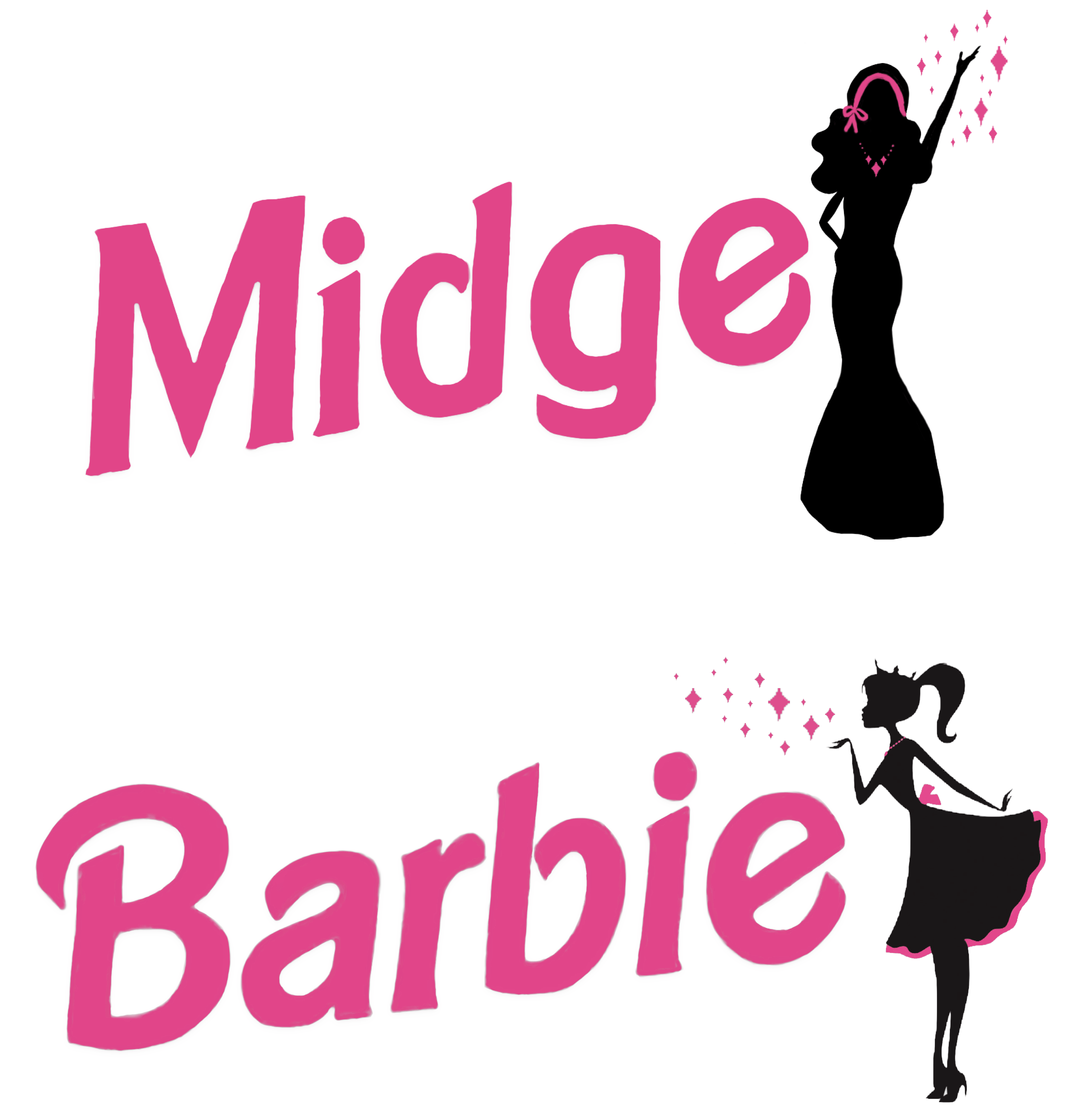
Here they are….the parody lyrics I wrote years ago for the song “Barbie Girl” by Aqua
(Male)- Hi, Network-Girl! - Hi, Ken! (Male)-I wanna go for a ride - Sure, Ken! Click in! I'm a Network girl in a Networked world Light in plastic, it's fantastic You can connect there, as packets go everywhere Implementation, routes are my creation (Male) Come on IP, let's go party! I'm a young switched girl in a layered world Look me up, click it right, I'm your technology (Male)You're my god, rock'n'roll, feel the converging and strain Take me here, connect me there, give me the IP I'm a Network girl in a networked world Light in plastic, it's fantastic You can connect there, while packets go everywhere Implementation, routes are my creation (Male) Come on IP, let's go party! You can click, you can play When you say: "I'm always up", ooh wow I'm a Network girl in a Networked world Light in plastic, it's fantastic You can connect there, as packets go everywhere Implementation, routes are my creation (Male) Come on IP, let's go party! Ah ah ah yeah Come on IP, let's go party! Ooh wow, ooh wow Make them cache, make them flash, I do whatever I please I can disable the route, you'll beg on your knees (Male)Come log in, be my friend, let me see it again Hit the porn, click around, it's my fantasy You can click, you can play If you say: "I'm always there" You can click, you can play If you stay in underwear I'm a Network girl in a Networked world Light in plastic, it's fantastic You can connect there, as packets go everywhere Implementation, routes are my creation (Male) Come on IP, let's go party! - Oh Ken, you're having so much fun! - Well IP, I'm just gettin' started - Oh, you perv Ken!
Fun side note: the featured image is artwork I created for Barbie and Midge: our Ford F150 and EarthRoamer (respectively) here at the ranch. The placards are displayed in their windows/dashboards when the two travel to races with the BDR team.
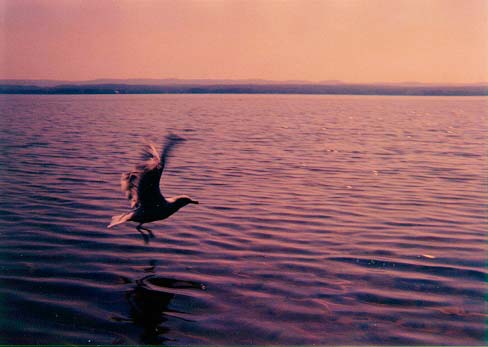
Over the last one hundred years since its publication The Adventures of Huckleberry Finn has managed to establish itself as a controversial book in regards to its possible influences over the minds of America’s youth. Thus, it has also become a popular work to transcribe to the screen for the masses to enjoy. Unfortunately this idea has been severely abused as sappy screen versions that are vehicles for various stars and not accurate translations of Twain’s work are produced every decade or so. I was surprised to discover how many different versions have become available to the public, and I was even more surprised to find how each movie’s style and theme definitively reflected the era from which it was produced. In viewing four different adaptations of the book I discovered that not only did cinematic process evolve, but so did America’s tastes and views. The roles of Huck and Jim evolved from one movie to the next as the social and artistic ideals of the American culture changed.
The first movie version I watched came out in 1939. That same year other popular novels, like The Wizard of Oz and Gone With the Wind, were transferred to the screen, yet only Wuthering Heights fell farther in terms of cinematic disaster than The Adventures of Huckleberry Finn. For this movie parallels the novel in few respect other than characters and location. Mickey Rooney who plays the pre-pubescent Huck, plays the role as only a short, twenty-something actor could–grownup. Rooney’s Huck “affords little, if any, insight into the realistic boyhood world of which old Mark wrote with such imperish humor” (Crister 1584). As if that deviance from the original character isn’t enough” he is a convinced abolitionist, and not only persuades the Widow Douglas to free Rex Ingram (Jim) but made a little speech allowing how it ain’t right for one human being to own another” (1584). Such changes to the fundamentals of Huck’s character lead the film away from Twain’s original theme of a boy and runaway slave’s adventures on the Mississippi, and instead it is the story of a young man’s coming of age and fighting for what is right.
Yet Huck’s character is not the only one that the director decided to change, for alterations to Jim’s character in the 1939 version are also apparent. Rex Ingram’s Jim loses his superstitiousness and is also no longer the mothering figure as in the novel. These traits are not lost, however, for Huck embodies them. Huck builds the wigwam and brings up the subject of discriminative borrowing, and it is Huck who is bitten by the Rattlesnake. Jim also deliberately refrains from telling Huck about his father’s death, for he is afraid Huck will return to the Widow. At the beginning of the movie Jim is thus relegated to a conniving opportunist, yet at the end, when Huck is bitten by the Rattlesnake, out of left field, a complete and sudden change in Jim occurs, for he saves Huck by taking him to a doctor. Thus a now selfless Jim turns himself in to the authorities.
Like the Huckleberry in this movie, Jim’s character is not that which Twain created. He serves more as a dramatic focus for Huck’s energies and emotions. While Rex Ingram plays the part with great emotion and remains the only highlight of the otherwise dreary production, it isn’t enough. The lack of humor is apparent, for the King and Duke only appear for a short while and only in order to support Rooney. Any original points of humor are forgotten while new little quirks are injected at will into the script. All the business with the King and the Dukes “true identities” is sped through while a bit about civilization and Huck’s shoe-less-ness is created and used to poke fun at his reluctance to be civilized.
All of this tampering leads to the implausibility of the finale of this shoddy flick. Huck, supposedly a boy of a mere fourteen, rides upriver in a steamboat, being solicited all the way by the captain for advice on where to avoid the snags and shallows of the mighty Mississippi/(Sacramento) River. His mission is a race against an angry mob that is out to lynch poor Jim for Huck’s assumed murder. Did I miss something when I read this book? Where exactly did Twain write all that? An epilogue maybe?
That right there is the problem with this entire film version. The director took too many liberties and made too many changes in order to deliver to the movie-goers one of their favorite stars in a socially minded film based on a American classic. The original Huckleberry Finn, however, deals with a completely different social structure than that of the Depression Era. In the movie, Huckleberry Finn is no longer a non-judgmental boy growing up on the Mississippi, but a rather whimpy young adult who lacked any spunk or flare for telling whoppers. It seems the pressures of the Depression had gotten even to our hero and made him grow up. Huck’s youth and vitality simply weren’t there.
This same problem continued to plague other adaptations throughout the next thirty years. In particular two versions I watched, while a bit more true to Twain’s original story, also took great liberties in respect to artistic license.
The first movie was a made-for TV version produced in 1975 starring Ron Howard. A Huckleberry played by Howard would have been fine if the movie had been shot about ten years earlier when he was Opie instead of Ritchie, for just like the 1939 version, Howard’s Huck is just too old. He’s lost is capacity to tell a good lie and he stays impeccably clean for a vagabond. By the end of the movie this Huck, while not quite as outspoken about it as Rooney’s, is a definite abolitionist. This movie is simply another vehicle for the generation’s broad-shouldered, almost stubbley heart-throb.
Antonio Fargas’s Jim of this version, on the other hand, is a rather wimpy, figure who Huck must protect and shelter. This is easily accomplished for Huck is not only much wiser but also taller than Jim. The two actors never seem to really strike the camaraderie that Huck and Jim develop in the novel, yet according to Royal Dano who plays the omniscient narrator/Twain himself, “At the journey’s end Huck and Jim could look into each other’s eyes and see the gift that the river had given–friendship. Each had learned the humanity of the other and they’d carry the satisfaction of it all their lives” (Huckleberry Finn 1975). This connection just did not happen.
As far as the supporting cast of the Duke and the Dauphin there isn’t really much to say either. Merle Haggard’s Duke reminds me of a mean and sober Johnny Cash, while Jack Elam overacts the King’s lying to make it seem exuberantly artistic. Neither character really injects any serious amount of humor, and what little humor found in the movie is from the terrible acting of Donny Most as Tom Sawyer. While quite able to play the moronically stupid Ralph on Happy Days, he is ill-suited for the quick-witted role of Tom. While his very poor acting did add some humor to an otherwise bland movie it was also very distracting. As long as they were trying to keep things with the cast of Happy Days why didn’t they cast Potsy, Chachi, or even the Fonz as Tom? One of them surely could have done a better job. Howard could win an Emmey for his acting in comparison. All of Most’s posturing and little intonations belong with Rooney and the pictures of 1939, not 1975.
A second cutesy posturing can be found in The Adventures of Huckleberry Finn, produced in 1960 and starring a little kid named Eddie Hodges. While at least Hodges’ age is relatively closer than either Rooney’s or Howard’s to that of Huck, his accuracy of portraying the character ends there. “Hodges exhibits a disquieting tendency to posture cutely (particularly in closeup shots),” and “He fails to convey with full force the pre-adolescent confidence and ingenuity of the universally boyish ‘Huck’ character” (Mosk.). Even with an all star cast to support him, Hodges’ Huck is poor.
The high points of this movie come with the performances of Tony Randall as the King and Archie Moore as Jim. Both actors manage to steal the spotlight from the posturing Hodges with their simple honest acting of the characters. Moore manages to play Jim as the good-hearted, mothering friend that Twain created. Randall, on the other hand, does ham it up a bit, but the humor he adds by really playing up the kissing of Mary Jane or the fear he instills by truly threatening Huck “is a delightful balance of whimsy and threat” (Mosk.). Randall even manages to sum up the King’s purpose in life when he sings “Tra-la-la-la/The world’s full of Suckers/Waitin’ around for us to take them in./Tra-la-la-la/There’s so many suckers/That a man with brains don’t even no where to begin” (The Adventures of Huckleberry Finn 1960).
What is most interesting about these two versions is the times in which they were released. The 1960 movie starring Hodges came out during the beginning of the Civil Rights Movement while the Howard adaptation was aired after the close of that movement and near the end of the Vietnam War. Even though the movies are only 15 years apart the differences between them are profound. The version from 1960 attempted to be light-hearted with a winsome Huck and all star cast, while the 1975 version sought to stress how tough life was back in the years before the Civil War. Even though I feel that neither film really accomplished these themes, they did manage to instill a general mood with their cinematography. While Rooney’s Huck was confined to black and white, these two versions were able to exist in full color. The stressing of the youth and gaiety of Hodges’ Huck is achieved by vivid Metrocolor hues as even the sound stages are painted and lit to look bright and alive. Howard’s Huck, however, is confined to a darker, more cloudy world as the conflicts and difficulties of that Mississippi life are stressed.
No matter what tricks these films use though, none of the movies manage to portray Twain’s original Huck, nor do they accurately follow the story. None of them managed to capture the spirit of Huck and Jim’s adventures. They all seemed to peter along at a snails pace changing the plot around or adding to it at will. Needless to say I was very happy when all three of these movies began to role their closing credits.
So after those three basically lousy renditions of Huckleberry Finn, I was delighted with the newest version produced last year by Disney. The movie is astounding. As far as cinematography is concerned it leaves all earlier versions in the dust. While the scenes are beautifully shot in the lush setting of the shores of the Mississippi this does not over-power the performance of Elijah Wood and Courtney Vance, but simply enhances it with realistic realism. While Vance captures Jim’s superstiousness and often protective mothering with ease, Wood gives “an understated performance as an independent, rascally kid whose penchant for tall-tale-spinning is his biggest talent. He extracts the subtleties from Twain’s character, never portraying him as merely cute” (Novak 22).
Not only that, but their trip down the river is almost verbatim out of the book with only one or two minor changes, or rather combinations, and these are for the simple sake of time constraints. For example, the house and boat scenes are combined so that Jim finds Pap dead on the deck of the grounded steamer rather than in the floating house. The journey down the river starting at Devil’s Island is complete, and even the characters of the Duke and Dauphin are accurate to the point of their getting tarred and feathered. In contrast with the previous films, Huck’s scene where he pretends to be a girl is well directed with time devoted to telling the story, not just breezing through it in a rush. In terms of following Twain original characters and ideas this movie was by far the best of the bunch.
The only disappointing point came at the very end when the movie stopped following the novel, for instead of Huck rescuing Jim from the Phelps, he rescues him from jail where Jim is waiting to be shipped back to Hannibal where he will have to stand trial for Huck’s murder. Huck springs him out right after the remains of Peter Wilks are excavated. In Huck and Jim’s flight back to the raft, however, Huck is shot, and Jim then carries Huck back to the villagers who decide they’re going to hang him right then and there. If you haven’t seen the movie yet I won’t spoil it by telling you the rest, but the one important thing that this very dramatic ending does which none of the others films are able to, is actually showing the lengths Huck and Jim will go to save the other. While this ending is not actually part of the original it does bring Huck and Jim closer together than the next hundred pages of the description of Jim’s rescue did, for it gives immediate examples of the characters’ abiding friendship.
Unlike any of the other three movie I watched, this adaptation also focused on Twain’s original theme of the uncivilizable Huck. Wood portrays Huck’s non-judgmental attitude superbly in every scene from the harry night spent with Pap’s gun in his arms to his regret over the tragedy of the feuding Sheperdsons and Grangerfords. It is interesting to note that in all three earlier movies Huck accepts becoming civilized. He may as in the 1939 version rebel slightly even at the end, but the corner has been turned and he is on his way to becoming a proper young man. In the 1993 adaptation, however, the widow may remain bent upon civilizing Huck, but he, at the close, follows Twain’s original call.
How could this latest, almost true to the original, adaptation decide to follow Twain’s actual plot and theme? To understand why we must once again look at what culture produced the earlier versions in comparison with our current culture. In 1939 Huck reflected the Depression Era in his more adult temperament and Rooney’s own presence and age on screen, while in 1960 Hodges portrayed a youthful exuberant version who posed innocently before the camera. Lastly, in 1975, Howard gave us a Huck Finn who had it tough. All three movies never really captured the strong relationship between Huck and Jim, for each one had to translate it into something else. In 1939 it made Huck a born-again abolitionist while in 1975 Huck is Jim’s protector. Perhaps in 1960 right before Vietnam the producers almost had it, but the version was too commercialized with a large cast of famous names and vibrant almost unreal Technicolor. It was the kind of movie that could easily have fallen under the Disney label, yet the curious point there is that the one version I watched that is, in fact, produced by Disney, tried very hard not to down scale any of Twain’s original work. This accurate portrayal of Huckleberry’s adventures is what led to its success in term of presenting Twain’s original theme.
That is not to say this version doesn’t contain a message concerning slavery. Yet this one doesn’t make Huck into an abolitionist, but rather into Jim’s friend. Huck disagrees with Jim being enslaved, and will agree with the Widow “that just because an idea is popular doesn’t make it right” (The Adventures of Huck Finn 1993).
Then why and how did our present culture produce this version? I think the actual genre of today’s film played a large role in it. Many people dislike movies based on previous material that fail to live up to the originals, but I don’t think that is the only cause. In today’s culture Huckleberry Finn is still looked upon as a controversial book because of Jim. Many uneducated critics feel that his character is a mockery or stereotype of the black man, but most people who do read the novel realize this is not the case. Jim is a very complex character. He’s not some fool who is content to sit out on the back stoop eating a watermelon. Jim has a wife and family of his own. He mothers and protects Huck, even concerning Huck’s dead Pap, although his motives there are a bit questionable. His dialect is not stereotypical, but defining. This latest film version of Huck Finn shows us this depth more than any previous work. Before the actors playing Jim were bound by a director’s vision that did not follow that of Twain’s. Vance, however, is not. Wood’s Huck is thus has a true equal in Jim, which then gives us a true portrayal of Jim and Huck’s adventures, showing that the American culture can now look at its history more objectively without trying to re-write it to suit the current trend.
Works Cited
Crister, B.R. Rev. of Huckleberry Finn. Metro-Goldwyn Mayer, 1939. New York Times 3 Mar. 1939: Rpt. in Vol. 3 of The New York Times Film Reviews 1939-1948. New York Times and Arno: New York, 1970. 1584.
Huckleberry Finn. American Broadcasting Companies Inc., 1975. Mosk. Rev. of The Adventures of Huckleberry Finn. Metro-Goldwyn Mayer, 1960. Variety 6 May 1960: Rpt. in Vol. 10 of Variety Film Reviews 1959-1963, Garland: New York, 1983.
Novak, Ralph. “The Adventures of Huckleberry Finn.” People 12 April. 1993: 22.
The Adventures of Huck Finn. Walt Disney Pictures, 1993.
The Adventures of Huckleberry Finn. Metro-Goldwyn Mayer, 1960.
The Adventures of Huckleberry Finn. Metro-Goldwyn Mayer, 1939: renewed Metro-Goldwyn-Mayer, 1966.
Notice a typo or other issue? Feel free to let me know.

It took me a while, but I finally managed to get through all of Tolkien’s essay “On Fairy-Stories”. I say finally because after the first forty pages of the work I could no longer follow Tolkien’s thoughts. This was not because I disagreed with his ideas on Fantasy and Imagination or because I don’t see the escapism evident in The Hobbit. I could no longer concentrate on his later arguments, for my mind just kept turning over and over the ideas in the first half of the essay which discusses the defining, origins of the Fairy-Story. More thoughts began crowding themselves alongside these new ideas until I realized that I found Bilbo more and more unfit as the ultimate hero of the novel. What was even more interesting was that I also realized this was because Tolkien created the character Beorn to serve as Bilbo’s hero. Thus, Beorn takes on the role of the hero of the novel.
So why isn’t Bilbo the ultimate hero? First off, Bilbo is not human. He is a down scaled version of the average man. In fact, his size is always an issue as he is often referred to as a little rabbit or bunny, and, more importantly his constantly misplaced or overlooked. First in the flight from the goblins and then in the warg clearing Bilbo is abandoned or forgotten by the dwarves. Later, with the aid of the Ring, Bilbo continues to get himself separated from the dwarves, yet these instances of the Spider Fight and the Wood Elves prove him an aid to his friends when they are in need. You would think this growth of character would continue, but upon arriving at the Long Lake, Bilbo is once again just tagging along the group. Finally, at the end of the novel the invisible Bilbo tries to bring peace and end the siege with the Arkenstone. While a noble action that required a fair amount of courage, this deed, much like his random thieving of the gold cup, does not make him the hero of the novel, for he is still simply a member of the group just like he is during his invisible stand with the elves during the battle. Alone, he can do nothing to stop or help win the battle.
So who then really stands out as an individual and could then be considered, not only Bilbo’s hero, but also the ultimate hero of the novel? Gandalf at first seems to be the obvious choice until his actions are taken into account. Gandalf only serves as a part-time guide to the band. He does manage to save them from the goblins in the caves, yet his power and abilities are limited. He can do nothing but advise during the battle. Even Bard the Dragon-slayer is limited in this final battle and is forced back by the goblin and warg forces. Finally “in the last hour Beorn himself appeared–no one knew how or from where . He came alone, and in bear’s shape: and he seemed to have grown almost to giant-size in his wrath”(Hobbit 302). After lifting the wounded Thorin out of the battle “he returned and scattered the bodyguard, and pulled down Bolg himself and crushed him”(302). By turning the tide of the battle Beorn saves not just Bilbo, but Gandalf, Bard, the dwarves and their allies. He is the ultimate hero.
As the hero of the novel Beorn then makes The Hobbit a much stronger and fascinating example of Tolkien’s concept of the fairy-story, for Beorn is supernatural. In this land of elves, goblins, men and dwarves, he is an individual who has a “great influence for good or evil over the affairs of man”(Tolkien 4). Beorn, unlike any other creature, except possibly Smaug, fears no one. He lives in the middle of Wilder– or wild–land, which makes for the possibility for adventures “in the Perilous Realm or upon its shadowy marches”(Tolkien 9). According to Tolkien such adventures are an important component in the world of Faerie.
In The Hobbit, however, Beorn does not have any adventures that we are aware of. He, unlike Bilbo, does not need adventures, for Beorn is an adult when we meet him, while Bilbo is still growing through his adventures. This lack of adventures does not change Beorn’s role as the ultimate hero, but rather adds to it immensely. Not only is Beorn a stable, non-changing character, but he has time to “hold communion with other living things”(Tolkien 13). According to the essay this satisfying of a primordial human desire is a accomplished through the workings of the Faerie world. As a farmer, beekeeper, baker, healer and companion to his animals Beorn becomes the master of beasts. The irony of this is that Beorn himself is capable of changing into a great bear. He thus, becomes a beast. While this would seem to place him into the realm of the Beast Fable it instead show us that Beorn is his own master for “he is under no enchantment but his own,” for in theses two forms Beorn is not just a bear mask on a human face, or a human mask on a bear (Hobbit 126). Beorn is an example of “the notion that the life or strength of a man or creature may reside in some other place or thing”(Tolkien 16). Beorn’s super-human strength rests in the furious bear, yet the nurturing gentleness of the bear is found in Beorn the Healer, Baker and Companion to Beasts. Thus, Beorn continues to help highlight Tolkien’s own Faerie world.
He also acts to simply add color to the story. This occurs when he is seen as simply a hermit living in the wilds. He is known to be “appalling when angry, though he is kind enough if humored”(Hobbit 125). Tolkien creates and uses Beorn as an “unclassifiable individual” that Bilbo just happens to meet during the journey (Tolkien 18). Adding atmosphere and more information to this Faerie world.
Beorn, however, is not a completely original creation. Tolkien, a scholar of Beowulf, ground Beorn in that very legend. Beorn is actually an Old English dame for men or warriour, and it originally meant bear. The tracing of this legend goes further still with Beorn’s Hall which is modeled after a typical Anglo-Saxon Hall. This does not mean Beorn is a Beowulf, for there are definite differences between the two. What it does mean is that Beorn’s character was created with the English myth in mind. Just as Tolkien states in the essay “Shakespeare’s King Lear is not the same as Layaman’s story in his Brut,” and so we must remember Beorn’s story is different from that of Beowulf (19).
Just as is Beowulf’s, though, Beorn’s story is a legend. He is a hermit who has few dealings with men. “He never invited people into his house, if he could help it. He had very few friends,” and he seeks no personal wealth. In fact, “he did not appear to care for such things: there were no things of gold or silver in his halls, and few save the knives were made of metal”(Hobbit 137). Never-the-less he guards his ponies (and thus, the dwarves,) he gives aid to the dwarves, and most importantly he turns the tide of the Battle of Five Armies.
In all of these aspects Beorn actually embodies the three faces of the fairy-story that Tolkien outlines (26). The Mystical is his supernatural strength and abilities. The Magical face is found in his continual communion with nature, while the Mirroring face is found in his avoidance of other races, yet pity for them and salvation of them at the end of the novel. According to the essay these aspects are integral to a fairy-story. In understanding that Beorn is the ultimate hero of Bilbo’s story we are able to see these illustrations and examples of the ideas and concepts Tolkien is writing about when he attempts to define the fairy-story.
Then why didn’t Tolkien write about Beorn? The two simple reasons for this is that a) he was writing for his children, and a hobbit is much easier to relate to than a very imposing black-bearded man. And b) this is a story of a journey. It is the story of Bilbo’s growth and change, and while the character of Beorn serves to add color to the tale and deepen our understanding of Tolkien’s concept of the fairy-story, he is but a minor character. Even though he is the ultimate hero or savior of the story, it is Bilbo that we are journeying and growing with.
Notice a typo or other issue? Feel free to let me know.

In the Complete Fairy Tales by the Brothers Grimm many of the stories tend to follow seemingly prescribed formulas, and while many of them differ in their plot or theme, many of the character types also seem to follow set formulas. Women, in particular, tend to have very stereotypical roles throughout many of the tales. The evil step-mother, the innocent girl, and the witch or hag are often present as one-dimensional characters who seem to follow a prescribed formula for the particular story. In many stories, however, a great deal of deviation and change is allowed for these characters to become more individualized, yet this individualization only takes place when the story the character is placed in calls for it, or rather needs it.
If you look at the tales that include an evil step-mother, you will find very little of this individualization. In “The Three Little Gnomes in the Forest”, “Hansel and Gretel”, “Cinderella”, and “The Juniper Tree” an evil step-mother is definitely present, and in each of these stories any of the stepmothers could be replaced by one of the others without affecting the story in any way. The step-mother is considered evil, for she wants to do away with the children for some reason or another. Be it because of lack of food as in “Hansel and Gretel”, or jealousy as in “The Three Gnomes in the Forest” and “Cinderella”, the step-mother seeks to either make her step-children’s lives miserable or to just to kill them. While the evil step-mother does not always act alone, (she often has a child or two of her own who help) she is always the instigator or ringleader of actions directed against her step-child.
So now the obvious question is why is the step-mother always so despicable. I think that a main reason for their wicked legend is simply because of that little pre-fix. These women, no matter what, are not the persecuted child’s true mother, who, in stories like “The Juniper Tree”, is an idealized vision of mother-hood, loving both her husband and child. Even in other stories like “Snow White and Rose Red” or “The Little Shroud” the birth-mothers are considered very loving and devoted–quite the opposite from their replacements. Which leads to the actual basis for the existence of the step-mother, for her role is to replace, or supplant the child’s real mother. Thus, they are unnatural and during the time these stories evolved most things that were unnatural were also considered evil. Not only are the step-mothers in the tales evil, but they also are very static. They never repent for their sins and transgressions, but are fated to be rolled down hills in barrels studded with nails on the inside or pounced upon and eaten by large birds.
In “Brother and Sister” instead of any altering to this stereotype it is combined with that of the witch or hag who then casts spells against the children. So we have very evil, unchanging women who is bent upon destroying her step-children, but why? What did the step-child or children ever do to the step-mother? In “The Three Little Gnomes in the Forest” and “Cinderella”, as in many of the other stories the step-mother has a child of her own who is usually ugly as sin and often stupid. The step-mother is then jealously bent upon making the usually innocent and often beautiful step-child’s life hell, and so the child becomes another stereotyped character.
Unlike the step-mothers, however, the innocents can be classified into three groups simply by the amount of nerve or assertiveness they show. In “Cinderella”, for example, the title character shows absolutely no spunk and is constantly seeking her step-mother’s permission or approval. She never seems to realize the faster she gets those birds to pick lentils out of the ashes the more her step-mother will dislike her. On the opposite end of the scale we could consider the step-daughter in “The Three Little Gnomes in the Forest”. She actually stands up to her new mom when she is told to go outside in a paper dress to search for strawberries in the snow. Her outburst of rebellion soon ends, but it reappears at the end of the story when, after she is killed by her step-mother she comes back to life, and, with the aid of her husband, punishes her murderer. Besides these two extremes there is also a middle of the road innocent who exhibits only a very small amount of nerve, or rebellion. Two-Eyes in “One-Eye, Two-Eyes, and Three-Eyes”, the sister in “Brother and Sister” as well as Marlene in “The Juniper Tree” tend to exert only a tiny amount of initiative. Rolling a few apples out from under a barrel, begging a brother not to drink from a stream or burying the bones of a murdered step-brother could all be thought of as very simple acts, yet they could also be considered acts of rebellion, for the child is indirectly or quietly acting against the will of the step-mother.
What purpose do these roles then serve? No matter what, the innocent, obedient, beautiful, and basically perfect child will come out on top by the end of the story, but this idea goes even deeper when you consider the reward system that is included in the stories. A girl who constantly mis-treated by her step-mother or step-sister’s will marry a nobleman or a full-fledged prince while a maiden who is killed by them will usually return to life and see their murder(s) severely punished. This whole archetype tends to perpetuate the idea that the meek will inherit the earth while the almost capitalistic step-mommy-dearest is punished for exploiting and misusing the innocent child–but all of that is a pretty basic theme.
In contrast with this simple idea lies the role of the witch or hag. A witch is not always evil like the step-mother in “Brother and Sister” or Mother Trudy. Often they are simply want to cook and eat children as in “Hansel and Gretel” of “Foundling”, or they make the children work for them as in “The Water Nixie”. Witches often help people by giving them gifts such as the sweet porridge pot, or a magnificent carpet. In “The Three Feathers” the almighty toad even provides a beautiful maiden for the young simpleton to marry. In “The Poor Miller’s Apprentice and the Cat” this helpfulness is extends even further when the cat commissions the young Hans to work for her for seven years only to reappear at the end of the tale as a princess who whisks him off to her castle to live in idle richness ever after. Yet another instance of beneficial witches or hags are the old woman and the Devil’s grandmother in “The Devil With the Three Golden Hairs”. While the elderly woman in the robber’s den aids the young man, the Devil’s grandmother manages to pluck the three hairs from the Devil’s head and harvest the answers fortune’s favorite needs.
All of these witches are different and cannot really be placed into one proposed stereotype, for unlike the step-mothers and the innocents these characters are often the variables. This is because each story’s structure, while very similar to that of the others’ is also very different. When the evil step-mother is missing the witches often appear in with the same aspects, or as in the “Hansel and Gretel”, they amplify the somewhat timid actions of the step-mother. (This occurred when the step-mother was content with simple abandonment of the children so that she would have enough food while the witch was going to eat the kids.) In other tales the protagonists received aid from them, while in others they even married them. The role the witch will play thus really depends upon the constraints of the story she is placed in. If the constant of the innocent, well-meaning individual is present along with the constant of the eternally evil step-mother or some other obstructing character , the witch or hag will most likely be helpful and usually pleasant. If, on the other hand, no such second constant is present the witch will fill the role and the protagonists will be left to muddle their own way out of the situation.
This all means that individualization of these three character types actually occurs only in the case of the witches. Step-mothers and the innocents maidens are regulated to fairly stiff formula roles while the witches or hags are able to vary according to the particular tale. I admit, however, that after reading so many stories that continually end happily ever after I found myself rooting for the evil step-mom or witch, for at least they show some promise of changing an over-moralized world. But the formulas are set and the characters and stories follow them, and no matter how boring over two-hundred tales extolling innocence, duty and meekness are, no unhappy endings exist. The best thing I can compare this disappointment to is watching the Coyote and Road-Runner cartoons. I always hope to see Wyle E. grab that meeping bird by the neck and triumphantly sauté it, but who am I kidding, that and step-mother’s living happily ever after just never happens.
Notice a typo or other issue? Feel free to let me know.

Long ago it was briefly a thing to send electronic postcards….think e-cards but much simpler and they’d usually end up directly in your email, so no having to visit a random website that would try to track you ever after.
While tidying my digital past I came across these relics. I think this sort of thing needs to make a comeback.
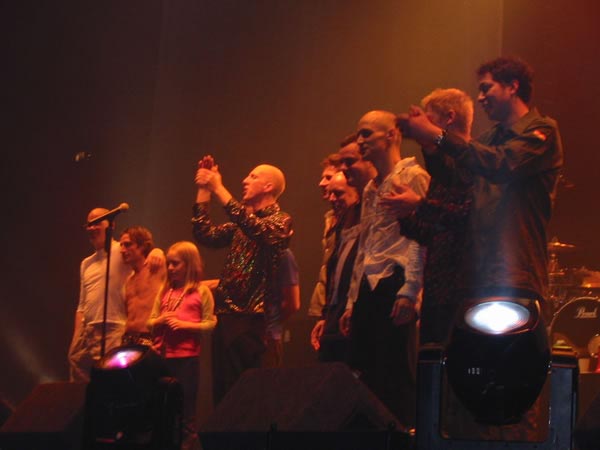
I have been working to tidy up my digital bits. This includes going through old hardware as well as some old tarballs. One of the things I unburied was this story from about twenty years ago. Here it is in close to the original format.
Intro
In December of 2001 I returned to the UK. While I had lived there for a year in the mid-ninties, I had not returned since that time.
I spent only a week on the island this time, as the key purpose of the trip was to see my favorite band in concert. People may laugh and think the idea silly, but it’s something I had to do. I’ve been a fan of James since the early nineties and had only seen them once before in concert. While I’m not an avid fan that knows all the details of the band members’ lives, I harbor a space in my soul for their music. No other band has such a space. I think perhaps it’s because their music rarely reaches the the US. They’re not overcommercialized here and I listen to what I want when I want.
This is a little chronicle of that trip, as I’m so very glad I followed my self and took a chance on what turned out to be one of the best things I’ve ever done in my life.
Page 1
How it Began
In early November I received a call from a marketing company regarding sitting in on a focus group for web developers. At the end of the telephone interview the woman asked me a question out of left field. “If you could go anywhere in the world, where would you go and why?” I answered without even thinking that I would go to England to see James in concert as they were embarking on their last tour with their lead singer. I was surprised that the woman noted my entire statement, as she read it back to be verbatim. That night, when I was driving home from my oppressive job, I suddenly decided that I would go.
That next week I made the flight arrangements and booked tickets for the last three concerts of the tour. I invited my best friend from Ohio, M, and he agreed to go along on the journey.
I packed very lightly. A small backpack to carry my laptop (gilda), my digital camera (with which I took the pictures you’ll see), and 12 rechargeable batteries and their charger, plus a power converter so I could recharge everybody. I took a small, and I mean small duffle bag with me which contained all of my clothing and toiletries for the week (which was basically two pairs of jeans, my Van’s, extra socks and undies, various shirts, a wool sweater, a fleece hooded and zippered sweatshirt, gloves, my lovely soft Italian hood/scarf tube-thing, and other various bits. I rounded things off with my leather biker jacket, a pair of black pants and black boots (all of which were worn on the way over.) I’m glad I took the boots, as I’m rather short and the extra height was great at the last concert….
I ended up carrying my backpack with me just about everywhere, as I was too paranoid to leave gilda alone often, even though we were usually staying in very nice hotels.
So anyway, on December 6, 2001, I boarded a plane to Chicago. I had booked our flights so that we ended up flying out of Chicago on the same plane. I managed to get M a flight out after his last exam and I arrived in Chicago shortly after his flight landed. I called home to check on my mom, who was having surgery that day. My father reported all was well, which was good, as if anything had gone wrong I would have been on the next flight to Cleveland instead of London. We boarded the flight to London and I gave up my window seat and sat next to a child with a cold so we could sit together. The flight over was uneventful, as the kid passed out shortly after takeoff. According to his father he was on antihistamines I drank a lot of hot tea and juice on that flight to ward off any thing. I really didn’t want to be ill for this week of my life.
We landed in London shortly after dawn. After collecting M’s big bag we went through customs. Now while I had booked our air travel in advance, I didn’t book any of our hotels in advance, as I had money and the desire to just sort of go with the flow. This apparently caused a bit of a problem with the customs agent, who wanted to know exactly where I would be staying. I sort of lied to them and just named a hotel on my handy-dandy preprinted list of possible digs for each of the cities we’d be visiting. That got us through with no more than a seriously raised eyebrow, and to the poor agent’s credit, we did look fairly ragtag, as we were traveling light. Mark just had a big rucksack and I had my small backpack and itty-bitty duffle bag. In reality we were on vacation and I could give a rat’s ass about money, but I didn’t want to announce that sort of thing after just landing.
Page 2
Manchester
We left the airport, caught the underground to the Euston train station, bought tickets out to Manchester, and I called the first hotel on my list (Britannia Hotel on Portland Street) to book a room (which happened to be where I told the customs agent we were going to stay.) I picked up some snacks and we boarded our train.
We then set out on the first leg of the trek across the island. We got in to Manchester late in the afternoon and walked to the hotel. Check in was accomplished easily enough, but our room was on the fifth floor. Thankfully the lift got us there.
Here are pics of the room.
After we unpacked and freshened up a bit, we head out into the streets. I ended up standing in line for over an hour to book our train tickets for the next several days. The rail system’s efficiency has definitely declined since I lived out there, but I didn’t want to deal with renting a car, or so I thought. Next time I go over, I’m definitely going to be driving. Still, the extra sleep I caught while on the trains made the choice a good one for the trip.
After taking care of our travel up to Edinburgh and then back down to England, we went back to the hotel for some food. Then it was about a fifteen block walk to the G-Mex Arena for the first concert.
Page 3
The First Concert
We got to the arena and I stood in line for what felt like ages to pick up the tickets. Then we found our way to our seats. We were in the nose bleed section (207–upper right in the pic), but considering how late I bought the tickets and the fact that M firmly refused to find standing tickets, I really couldn’t complain.
We had a great view of everything: the crowd, stage, crew, etc. When we entered the arena, the opening act, Turin Brakes, was already midway through their set. They were pretty good, but the crowd was anxious for the main event.
The arena was packed, and when I saw how many people were down on the floor I was kind of glad I wasn’t down there too. I had just flown for roughly 12 hours and then sat on the underground and on a train for five more just to get here. While far from the stage, it was really a great way to see the first show.
After what seemed like a very long wait, James came on stage and started things off with “Say Something” and then they played “Waltzing Along” and “Sometimes”. I started experimenting a bit with my little digital camera and took some non-flash pics of one of the huge video screens. Not the greatest, but still nice mementos.
The next songs in the set were “Laid”, “I Know What I’m Here For”, and “God Only Knows”. It was great to hear the world famous “Laid” live but seeing them perform “God Only Knows” was incredible. Andy Diagram, who was performing again with the band for this tour was simply incredible. A live and loud ringing trumpet made the performance spectacular as Tim played preacher and Michael (I think) voiced the man behind the curtain/megaphone.
They followed up with a very quiet rendition of “Someone’s Got It In For Me” and then “Vervaceous”. Then everyone but Tim and Jim Glennie left the stage and Larry Gott, a former member of stage came out. An acoustic performance of “Protect Me” with Tim sitting between the two guitarists was quite lovely.
The lovely quiet spell of songs continued when, David Baynton-Power, Mark Hunter, Saul rejoined the trio for “Out To Get You”. The quiet ended there in many ways as Saul’s equipment went out. He was less than pleased with the occurrence and wandered about the stage with his violin muttering while a tech scurried about making things right. James switched gears after that started off on another series of definitely non-quiet moments. First with Hymn From a Village and then, after Saul’s amp woes were resolved, with Johnny Yen. They then, after Larry and Andy left the stage, played the first song of the night from their recent album–“Getting Away With It (All Messed Up)”.
The highlight of the night for me was the next song, “Tomorrow”. It is hands down, my favorite song by James. When I first heard it, I didn’t really care for it, but the anthem is now my very favorite and I’ve gone so far as to put it on one of my business cards. Silly I know, but hey, I have faith in things like that. The set finished out with “Born of Frustration” and “Ring the Bells”. Everything went dark and I was afraid that truly was the end of the evening.
Thankfully, the band (including Andy and Larry but minus Tim and Saul) returned to the stage. Tim appeared out in the crowd on the right side of the stadium (from where we were sitting) to sing “Top of the World” as Saul and his violin appeared on the opposite side of the arena to accompany Tim. It was a very poetic moment.
Then Tim and Saul disappeared as the band began the opening strains of “Sound”, another one of my favorites. The song live was a stunning work lasting over ten minutes, but I wouldn’t have loved to hear even more. The lights went dim then, but the band soon returned for a second encore. They began quietly again with “Space” and followed up with “She’s A Star”. They then kicked things up once more with “Come Home” before performing their last song. It was a lovely finish to the concert too, as while Mark played the intro keyboard, Tim and the crowd sang the opening verse before the rest of the band joined in the event. What started as a very sad moment, with just Tim and the crowd singing those rather depressing opening lyrics, became a joyous and very uplifting moment as everyone in the arena was carried along by the song and it’s, dare I say, message. This was James’s last hometown concert with the singer who had been with them for some twenty years and it was lovely way to say good-bye.
Page 4
On to Scotland
After the concert M and I made our way back to the hotel. It was close to midnight and we stopped at a chip shop to pick up some food. It was cold out, but not as bad as I had expected, but that could have been due to the adrenaline. After eating a bit all my energy just left me and I wanted a nice warm bed. We made it to the hotel, where the staff were waiting it seems. I had to show them my key before they’d let us through the door which I thought was rather odd. I didn’t think anything of it though until the next morning. We had to be up very early to catch our 6am train up to Edinburgh and when I went down to check out, there was a party going on in one of the rooms off the lobby. I could hear people singing (not loudly) and some light chatter and I have this suspicion now that James was there–a private party. I’m kicking myself now because I didn’t ask or just peek in to see for myself.
Anyway, we then trudged off to catch our train. After a little wait it arrive and we boarded it. We passed out shortly thereafter. I woke from a short nap and tried to figure out where we were. I made the mistake of asking the conductor where we were to disembark, as I was too tired to figure out what was actually written on the tickets. (The writing wasn’t exactly legible.) He informed me to change at Lancaster, so we got off at Lancaster. Mistake. Seems on that day, due to rail work being done that day, there would not be a connecting train. We waited at the station for a few hours until the next train that would get us to Carlisle. We boarded that train and got to Carlisle. I inquired with the station manager who politely wrote down “Misguided by director, please pass through” on our tickets and we caught a coach to Glasgow as the next train to Edinburgh wouldn’t leave for several more hours. The coach ride was a pleasant change of pace and we got in to Glasgow where I once again asked for assistance–making use of my lovely American accent. This time we need to head over to another station within the city to catch the next train to Edinburgh. A quick shuttle ride and we were there. There are trains every half hour between the cities, so we were soon in Edinburgh. The trip took an extra hour and a half, but everyone along the way was so helpful and as there was no concert that evening, I didn’t stress over the delays.
We arrived in Edinburgh and I found a hotel–the Hanover House. Right across the street was an Internet cafe, where I soon went and checked my mail. M and I then wandered the streets a bit. We had dinner at a pub down the street from the hotel and then we wandered about the city. We took in a movie (Harry Potter and the Philosopher’s Stone–and if someone could please explain why it’s the Sorcerer’s Stone here and the Philosopher’s stone there, I’d greatly appreciate it.) We returned to the hotel, and I finally had lots of postcards to write on and then send. M went to sleep and I went over to catch up on my mail, as while I couldn’t plug gilda into a spare Ethernet port, I could use one of the hundreds of Kiosks to stay in some semblance of contact. The connection back to my server wasn’t exactly secure, but I was obscured by the masses enough I didn’t worry too much.
Part 5
Edinburgh Castle and Such
The next day we got up and headed out to see the castle. I had been there years ago with my parents, but this time I had a camera and I took a lot of pictures. These are some of my favorites.
Page 6
Even more images of Edinburgh.
After the castle we went to the a museum down the street. I took these images amoung the various exhibits of optical illusions and tricks.
Page 6
The Glasgow Concert
After a day of site seeing, we found a pub and had dinner. Then we walked to the train station and caught a train to Glasgow for the second concert.
We arrived in Glasgow and headed towards the metro trains. Finally caught a train out to the SECC. It was packed with people heading to the concert. We finally arrived and entered the building. I headed over to one of the sales booths and picked up stuff. I ended purchasing three shirts and a program. We then found our seats. We were once again fairly far from the stage but at close to eye-level this time. We had arrived in ample time to hear the opening band’s full set. They were pretty good and the crowd, while rowdy didn’t seem as rude as at the previous concert.
After what seemed like forever, James took the stage, opening loudly with a wonderful and flashy performance of “Laid”. They followed it up with “Waltzing Along” and then “Sometimes”. The crowd was great and we had a good view of the rolling sea of people standing in front of the stage.
I remembered the first time I saw James perform live–from the balcony of the Newport in Ohio. Back then Tim had surfed the crowd, but it was an older band up there now. They were more content to enjoy the crowd where it was as they jammed over the first wave of adrenaline.
“She’s a Star” was next up, followed by “I Know What I’m Here For”. They then turned things up a notch with a performance of “God Only Knows” that in my opinion blew their version of the previous night to shreds. Andy simply wailed and the power from the rest of the band reached an ecstatic level. I’d never heard James play with such ferocity and it was wonderful.
The pace dropped down considerably as they followed up with the quiet of “Vervaceous” and then “Out to Get You”. Apparently they were running problem free, as there were no indications of the equipment failures that had occurred at the last concert.
The high energy kicked in again with a strong, if not spectacular performance of “Getting Away With It (All Messed Up)”. The band followed up with one of my favorites, the witty “Destiny Calling”. They seemed to falter at first with it though, and ended up restarting after the first few bars, but after beginning again they seemed to “let it all go”.
Next the band launched off into “English Beefcake” and I thought how lovely it would be if Brian Eno joined them to provide the harmonies, but alas, not on this evening. (Little did I know….), but my disappointment quickly faded, as the band then launched into the best performance of “Tomorrow” (my favorite song at that) I had ever heard. Tears came to my eyes as I realized, while I still had one more night to enjoy, this was really it. While James would go on, their voice was changing. Not necessarily a bad thing, but still something to mourn before moving on to experience whatever comes next.
Another of my favorites followed as the band quietly began “Johnny Yen”. The quiet didn’t last long, however, as the energy soon climbed again and the band followed with “Born of Frustration” and finally “Ring the Bells”. The band then left the stage and the lights went out. I craned my head about as I tried to figure out where Tim would appear, as the opening bars of “Top of the World” quietly began. He appeared in the center of the stands (we were pretty much sitting in bleachers) and Saul remained on stage for this performance, as the two serenaded one another across the crowd.
At this point M wished to leave, but I wasn’t up for leaving just yet. Besides, I reasoned, we had an hour to get to the train station still. So we got to see the band perform “Space” . The soft opening soon bloomed into a lovely and uplifting bass-driven sound-scape that was then followed by another great performance of “Sound”. As if the orgasmic finale of Sound wasn’t enough energy, James went one step farther and launched into “Come Home” at full force, as Tim announced “Time is running out. Enjoy every second now.” The crowd was frenzied as the opening synth melody washed over them and the rest of the band joined and restraint was left somewhere off-stage.
As the song ended I realized it was really getting late, and I worried a bit about whether we should leave, but I wasn’t going to miss one bit of any of the concerts, so I told M not to worry as Tim announced this next would really be the last one. The opening bars of “Sit Down” then began and I think everyone in the place was singing along as James sang yet one more good-bye.
The lights came back up and M and I made for the doors. We had roughly forty minutes to get to the train station and I figured we could catch a taxi once we reached the outside. Unfortunately one wrong decision landed us right in the middle of a herd of people and it took roughly fifteen minutes for us to make our way through the crowd. We finally gained the exterior only to discover we were most likely on the wrong side from the main entrance and trains. I fought down the panic that rose up in my throat as I realized we had less than twenty-five minutes to get to the train station or else we’d probably be stranded in Glasgow and thus, we’d miss our train down to London. I didn’t want to think about the consequences of that, so I cast about for a moment before calling out to two young guys walking out into the car park. They were kind enough to stop as I asked them which direction was which, and as I feared, they told me I was indeed, on the wrong side of the building. They asked me what time our train was and when I told them they assured me I would certainly miss it. They then asked me where we were going and I replied back to Edinburgh–at which point they kindly offered us a ride, as that is where they were from! I thanked my karmic stars and after thanking them profusely, we settled into the back seat.
It turns out that Doug and Oscar had attended the concert after getting tickets from someone who couldn’t use them at the last minute. They had driven up from Edinburgh and had arrived just in time for the show. On the way back, Doug drove quickly, which wasn’t difficult at that hour of night with the roads virtually clear of traffic, and in thirty minutes’ time we had passed our scheduled train and were back at our hotel in Edinburgh.
Unfortunately I can’t seem to remember how to spell Doug’s last name properly, even though I wrote it down. Thus, I can’t get an e-mail out to him, but I am so very grateful to both of them for their kindness to two very silly Americans.
Page 7
On to London
Warning–Gross Story Follows:
We awoke early once again and set off to catch our train to London. I felt tired and weak and then strain from traveling was starting to take it’s toll on my system. I had to stop and rest at one point and M kindly took my duffle bag for me. We soon were at the station and I collapsed on a bench and waited for some strength to return. My sugar levels were dangerously low and I tried to munch on a granola bar, but it induced too much nausea. Eventually the train pulled in and we boarded, but a few moments later I had to dash back out to the platform where my stomach proceeded to rid itself of all the insulin loaded bile. A conductor walked by and asked if I was all right, to which I nodded. He probably assumed I was hung-over. I wiped off my mouth and got back on the train–non too soon, as it soon started on its way. Thankfully the worst of the sugar problem was over and I made certain after that episode to take care of myself so it wouldn’t happen again.
We changed trains in Carlisle and arrived in London via Euston that afternoon. I thought a bus would be quicker than the underground, but I had forgotten that it was the Christmas shopping season. After a half an hour of stop and go’s we disembarked and headed to the underground. Another half an hour later and we were in Kensington. I guided us from memory to the hotel I had often stayed at when living in the UK and we found a room. We went off in search of food and ended up at a little Italian restaurant around the corner. Against M’s protests that it was too early, we then boarded the underground again and set off for Wembley arena and the last concert.
Page 8
The London Show
We arrived at the arena, or rather we disembarked from the underground and made our way the some 10 blocks to the arena. Thankfully I had the tickets for this show in my grubby little paw and thus I wouldn’t have to go through the will call trial again. We found the entrance and I found a scalper. He named his price and I took time to think it over and call Frances (my host-mom, but more on that on the next page) to let her know I’d be out to see her the next day. After the call I walked back over to the scalper and handed over seventy-five quid and my existing tickets in exchange for two standing tickets. We then walked into the arena and I found a spot along the rail.
I was excited, as while the first two concerts had been great, I had been so very far from the band. The crowds between the stage and my view had been vast and also vastly different from each other. First the hometown crowd of thousands had created an emotional tidal wave and then a huge mass of Scottish students had relished in the energy and abandon that James created with and for them. After two shows peering at the band with binoculars I was going to be as close as possible, as this was the end of a huge part of my life. Whatever James metamorphosed into once Tim left would be something new, and this was the last good-bye on my trip.
I didn’t want the night to end, even the waiting before the opening act came out I was happy to chatter away with M. An interesting bit of luck occurred as I offhandedly started talking to two guys near us. Trying to shed some of my nervous energy I included them a bit in the discussion and soon I was chatting merrily away with one of them.
Olivier had flown over from Montreal for this one concert and he pumped me for every bit of information I could share from the previous two concerts. He was an avid fan and we were soon swapping bits and pieces of song-knowledge and band-lore. M soon decided he to leave us for the safety of the side wall saying he was to old to all the way up front. Pfph…he’s only a couple of years older than I.
All too soon the opening act took the stage, and while they were good, I barely remember any of their performance. I did manage to pick up a cassette of a couple of their songs, and can now say they’re quite good. After Turin Brakes left the stage it was time to set up things for James. Unlike Manchester which had used a large white cloth curtain to hide the band’s setup (and the curtain was dropped just as James began to play,) this time everything was in plain site (similar to the Glasgow concert.)
Soon enough the spot light guys started up their tiny ladders. I had seen them rise up above the crowds before the past two concerts, but I hadn’t realized how tiny the ladders were. They were soon ensconced in their seats as safely as one can be and the crowd started to buzz even more with anticipation.
Suddenly it was time and the band appeared and opening chords of “Laid” breathed out. The crowd loved it and the band followed up with “Waltzing Along”. I was a bit worried that the set list would be the same as the proceeding night, but then I remembered Larry was due back and that might spice things up a bit. “Tomorrow” followed and my fears were put aside, as while not nearly as wrenching as the performance the proceeding night, the band was beginning to mix things up a bit. “She’s a Star” followed on the heals of “Tomorrow” and the band’s energy seemed to be growing stronger.
“I Know What I’m Here For” quickened the pace, as Michael and Adrian (who were directly in front of me) seemed to awaken as they and the rest of the band finally started to let it go a bit. The energy finally began to climb the ladder as James then launched into another high-powered performance of “God Only Knows”.
All went quiet then, and Larry came out on stage with his chair, as the rest of the band exited. Larry and Jim once again sat beside Tim and the three performed “Protect Me”. It was incredible to see the three together up close and while the song was very quiet in tone and pace, the energy continued to climb. The rest of the band, minus Adrian and Michael returned for a great rendition of “Out To Get You” and followed by a dizzying performance of Hymn From a Village.
Throughout the performance Olivier and I commented about this or that song as I fought to keep my feet from being smushed by the screaming teenie-boppers nearby. (Actually that was the one annoying blip on the radar that whole evening–as I stood next to three of the most annoying girls possible. Screaming and waving as if they were at a Duran Duran concert. I just showed my age there didn’t I? How about New Kids on the Block? No? well maybe those Backbeat Boys then.) Anyway, suffice it to say I have blocked out most of the horror and I avoided making contact with their heads and my fist fairly well.
The concert continued as James, minus Larry now, launched into “Someone’s Got It In For Me” and it seemed that a bit of the energy was falling off. Not to worry though, as with their next song, “Getting Away With It (All Messed Up)” the energy began to flow again. The crowd enjoyed the new single and cheered when James then launched off into “English Beefcake”. I thought it was a bit odd when before “English Beefcake” a second microphone stand was brought out and placed next to Michael, as that meant there would be an additional player on the stage. As Tim began to wind down the first half of the song, a short figure walked out and took his place at the additional mike. I saw that he was bald and then suddenly knew it was. As the spot came up, Olivier and I turned to each other and actually screamed “Oh my god, it’s Brian Eno” in unison. We then turned and became enraptured with the performance. While Eno had a bit of trouble harmonizing at first, I think it was partly due to the falsetto and the possibility that he wasn’t on a monitor. Still, seeing Eno in the flesh was incredible. He stayed on stage for the next song, “Sometimes” which ended with an incredible jam session.
James then started in to “Johnny Yen”, and while I had heard it at the proceeding two concerts, neither performance was close to the energy or rather manic frenzy of this performance. I’m sure a great deal of my sentiment was helped by the fact that Tim moved stage left and sang right in front of me–at one point he seemed to stare into my eyes as we both sang the lyrics.
I was so entranced that it was only when Olivier frantically nudged me and told me to take a picture that I awoke a bit. I managed to do so, and I realized I had barely taken any pics the entire concert. I began clicking a bit more often….
All too soon “Johhny Yen” was completed and the band moved on to “Born of Frustration” and then “Ring the Bells”. The lights went dark as the band left the stage, but I didn’t despair, instead I once again began looking about as I tried to determine where Tim, and possibly Saul, would appear.
The band returned to the stage and the opening bars of “Top of the World Began”. Tim soon appeared in the far back of the arena and Saul was up in the stands on the opposite side from where I stood. It was another lovely moment and it faded all too soon.
After “Top of the World”, Larry rejoined the group and they began to jam a bit as “Sound”‘s first bars were introduced. Tim and Saul rejoined the band on stage and they group proceeded to jam for well over ten minutes. It was quiet incredible as each member played to dominate and then mesh back in to the rich musical fabric of the piece. Years of working and performing together had led up to each performance of “Sound” on the tour, and I’m still not sure which of those I saw was “the best”. All too soon it ended though, and the lights went dark again. I knew they’d return one last time though and the tears started to well up in my eyes.
The band returned and performed a raucous “Come Home”. I knew what was next after having been to the other concerts, but so did the crowd, as there really was only one other song left for the band to play that night.
And so, with that lovely keyboard opening from Mark, Tim and the audience began to sing the first verse of “Sit Down”. Eno had rejoined the group to make it a full ten band members for the very last hurrah. Thus, except for a two missing souls that night, everyone who had performed as a member of the band plus one of their most influential producers, was present to sing the anthem one last time. A few fans were hoisted out of the crowd (one of the annoying teenie boppers thus disappeared and my toes were thankfully saved) and as the band played the last notes of the song, and began to take their bows, the crowd continued singing that lovely refrain. The band and Eno graciously remained on stage for a bit, waving and smiling to the fans, but eventually they all disappeared.
Exiting Stage Left.
Concert Epilogue:
As the concert crowd dispersed and M and I made our way back to the hotel, the euphoria and sadness began to disperse and my mind wandered through my memories
I discovered James and their music during college. They were touring to promote Laid when an old high school friend invited me to see them. We got there early and found spots in the balcony that circled the pit. The opening act was a lone female guitarist and the place was packed, and once James took the stage it was all over for me. I had once been a rabid REM fan, but after the release of Green my interest had fallen off as they had become too popular and too commercial. James on the other hand was the same age as REM, but the bulk of their music was undiscovered country to me. Within the next year I had collected all of their studio albums and had started learning about their singles catalogue. I didn’t know much about the band members themselves and I really didn’t care to know everything down to their last bowel movement. The music was what was important, but slowly, over the years, I began to find out bits and pieces about the band through their music. Then, when the biography Folklore was released, I bought an advance copy and suddenly a whole new portal of understanding into the music opened up to me.
For me James has always been a pretty private event. Very few people I meet know who the band is unless I play or sing “Laid” for them. While on one hand this makes them in many ways my little secret, in other ways it’s frustrating, as I know that such a talented and incredible group should have a larger audience. Over the years I’ve looked forward to each new release as my collection has slowly grown to include a few rarities and bootlegs, and lately I’ve been trying to gather video bits and pieces, but as most things are in PAL, that’s going to be a long process. Even with the diversions, of a book and videos however, the music still remains the central facet.
I listen to the music when I want. I’m not inundated with it day in and day out like I would be were they carried on the radio. I’ve gone through periods of times where I have my fifty-one disc CD player loaded with all James discs. I’ve played one song over and over–usually great to do when coding or other concentration sensitive tasks. I’ve incorporated many of their lyrics into purgatory–always with credit of course. And I’ve flown over five thousand miles and traveled for days with little sleep to see them in their last concerts with Tim singing lead vocals.
While Tim has said good-bye to the band and Saul, Jim, Mark, David, Adrian and Michael have stated James will continue on without him. James is once again going to change and I think everyone who enjoys their music is uncertain what that change will bring. That distinctive voice and that distinctive flailing dance have left the stage and the fans are waiting to see what will appear when the lights come back up. I too wait, and as I do so, I continue to enjoy the music the band has created–music that continues to provide much of the soundtrack for my life.
Page 9
To Walesby
The next morning I slept in until 9am. Then I was up and was off to the train station. I was heading off to Retford to visit family. M had elected to stay in London, which was probably a good decision as we were starting to bug one another. I, on the other hand, was off to visit my host family. I had first met Ron and Francis when I went overseas to attend UEA. Before going to the university I stayed with them for several days and we got along so well I visited often during my time at UEA. My parents also got to meet my host-family when they came to England to visit me and the next year my host mother and her eldest daughter, Liane, visited my family in Ohio. It had been five years since I ‘d seen them so this would be a great bonus to my trip.
I boarded the train at Victoria and ended up sitting across from a dancer on his way to Leads to perform with a company. We had a pleasant conversation and soon I disembarked and found Ron waiting outside the station to ferry me back to their house. It was a very pleasant visit, and I ate way too much and we all chatted until late into the evening. Sadly their dog Sable had passed away six months earlier and thus was not there to demand my lap space and attention.
I stayed over that night and the next day Ron drove us down to Peterborough to see Karen. I got to meet her son Sam and we all had lunch before Francis and Liane took me to the train station. All too soon I was back on my way to London.
These are some of the pictures I took with my camera.
pics of the new kitchen and dining room
Page 10
Back to London
I arrived back in London in the late afternoon and I headed to Camden market. I poked about a bit but had little luck finding any James rarities. I did find a few Christmas presents though as I poked about the stalls. I didn’t want to buy too much, as my bags were already quite full, as after the concert at Wembley I had picked up an extra T-shirt and program for a friend, plus a mug for myself.
I grew tired of shopping though so after an hour or so I then across London to Westminster Abbey as I had never visited it. The abbey was all right, but over the years I’ve slowly become burned out on churches. It was nice to see Poets’ Corner and some of the other historic spots, but I didn’t linger. I headed back to Kensington and dumped my stuff off in the hotel room. M was out so I left him a note. I then set off unencumbered by my backpack. (I had left my duffel bag with him before heading off to Retford.) I went to a pub across the street and met a few staff members from a hostel chain. It was a pleasant way to spend an hour or two, but I soon left them and headed down to Picadilly Circus as I wanted to pick up a copy of the new release of James b-sides. I stopped off at HMV, Virgin and of course Tower. Tower was much smaller than I had remembered, but I still managed to buy a few interesting things. I wandered about a bit and I thought about taking in a movie, but there wasn’t anything showing that interested me. I did get to see the setup for _The Fellowship of the Ring_ at Leicester Square though, as it was due to open the next day. I headed back up the way I had come and popped into the Trocadero. Most of the stores were quiet, but I found a lovely little store called Octopus where I purchased a cute little sugar bowl as well as some wheeled salt and pepper shakers and a cute little purple ring.
I then returned to the hotel. M was already there and we chatted as we prepared for our return flights that next day. I had not been able to schedule us out on the same flight, so I was due to leave a few hours before him that next morning.
The next morning I rose early and headed out. I arrived at Heathrow and suddenly panicked as I thought the line for Air Jamica was the line for American Airlines. Not to worry for long though, as I soon found the right line and just a few minutes later I had gotten my boarding pass, checked my duffle bag (I needed to carry on my sugar bowl and a few other items in an extra bag,) and was on my way to the gate. Security was much easier than that of the US, as it was just so efficient. The same procedures with a lot less hassles.
I managed to navigate through the duty-free shop without buying anything and soon enough I was at the gate and ready to board my flight. It had been a lovely trip and sadly I had to go home.
The flight to JFK was uneventful and soon it was time to disembark, get my bags, go through customs, recheck my bags, find my new gate and get on another plane. The last bit of the trip was tiring, but I eventually got in and home and there was much rejoicing–well sort of, as the next chapter in my life certainly was not as much fun as this one and I’m still dealing with the outcome, but more on that later.

Two years ago….pre-pandemic obviously….I flew down to Los Angelas for just a day. The reason was to see one of my favorite bands in concert at the Greek Theatre. Originally I thought I’d post about the trip over at the ranch website, but I changed my mind. So finally, here’s my documentation of that fun little excursion.
I flew into Burbank Airport, caught an Uber to the start of Ferndell trail. A short walk later I stopped for lunch at the Trails Cafe.
Then it was time for a hike and I made my way up to the Griffith Observatory. It was a pretty warm day, but as I had just a small bag with me (and I mean small) it wasn’t a difficult trek. It was however quite dusty.
After touring the Observatory and having a bag of crisps and a drink at the cafe, I wandered down the east trail towards the theatre. By the time I got down to the bottom my feet were pretty dusty as I was just wearing sandals. But a quick rinse at the public toilets alleviated that issue and then I made my way over to the entrance of the theatre.

I needed to be there early as my ticket included early admission to attend the sound check. The band played a handful of songs for the fifty or so other die-hard fans. Then we were ushered back out into the concession areas. I grabbed a snack and a glass of the house red and fairly soon after general admission opened up.
I had a delightfully up close seat: far left of the center front row. The band played a mix of stuff from their then-new album and some of their extensive back catalog.
The rather abbreviated set list (compared to past concerts I’ve attended) was because this one was actually a double bill. The second act was The Psychedelic Furs. Not a band I knew well, but they put on an equally great show.
The show finished up and I ordered an Uber which took me over to a friend’s fiancee’s empty apartment where I could crash for the night. Ears buzzing and mind spinning I passed out pretty quickly.
The next morning I was up early to shower and meet said friends for breakfast. A short while later they dropped me off at the airport. I had over two hours to kill prior to boarding, so I walked over to a nearby Fry’s. Little did I know that would be the last time I would set in foot in one as earlier this year the company shut down. I found a cute mini lego set and a tiny flexible tripod.
When I said I traveled light for this trip, I wasn’t kidding. That little blue bag in the left picture above was I took for the day. Inside was a change of clothing, my iPad, a few toiletries, hair brush, charging cables and wallet plus by this time some merch from the concert. I found that gorgeous bag the month before when we were in Zurich at a store near our hotel: Jo Brauer Mode. It is now my go-to carry on “personal item” as it’s very versatile: even when I’m lugging camera gear.
Anywho…that’s the story of day-trip down to see James in L.A. This wasn’t the first time I traveled to see them live–in fact I just recently unearthed the old HTML pages containing the 2001 trip to the UK to see them. That story once lived on purgatory.org but it was mothballed a decade ago. I think I will dust off that story next….

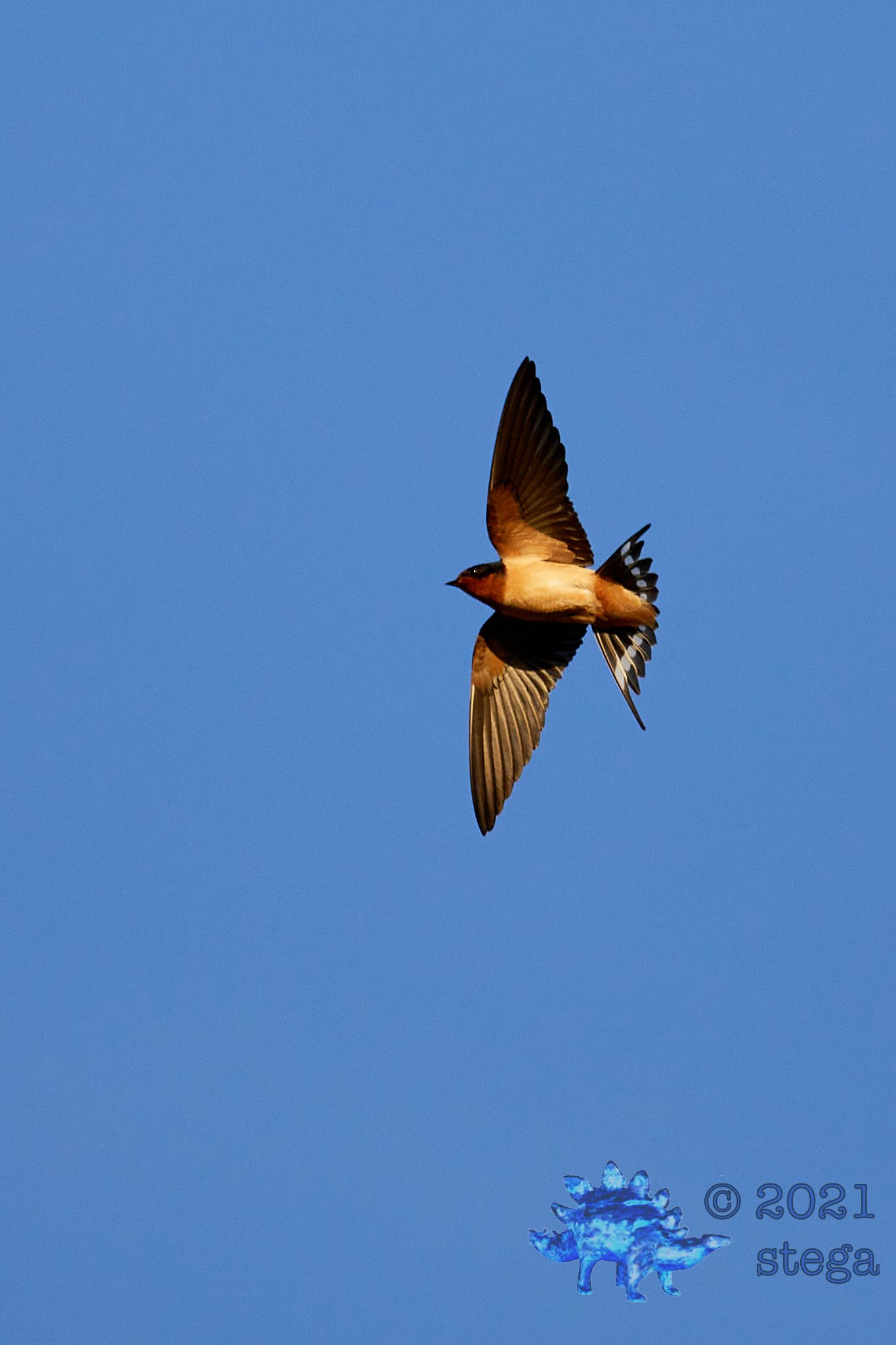
Back in March I took part in an event to benefit the San Francisco Bay Bird Observatory.
These were some of the pics I captured.



